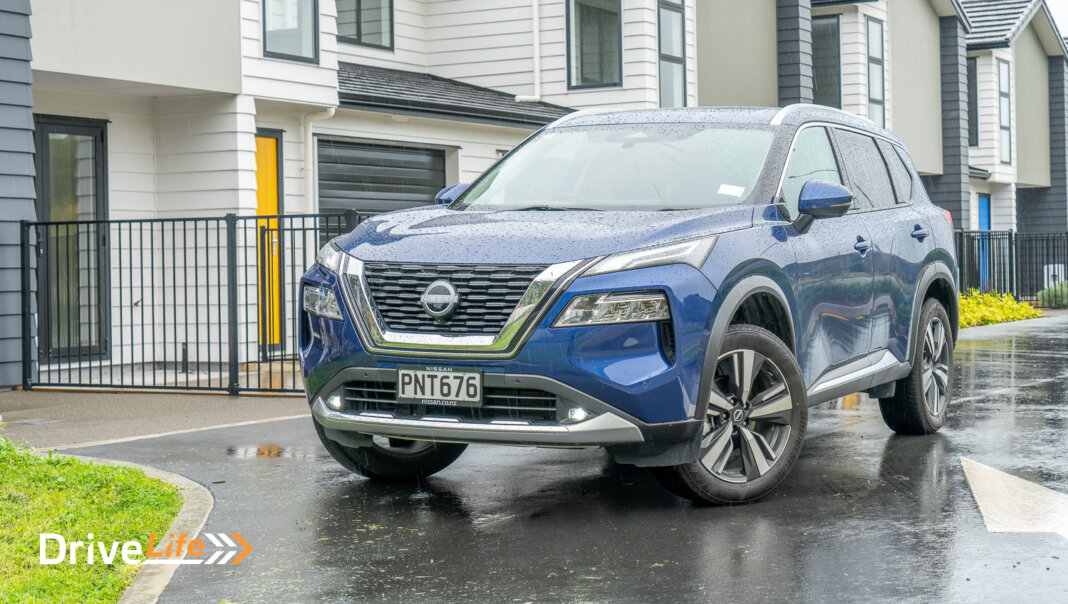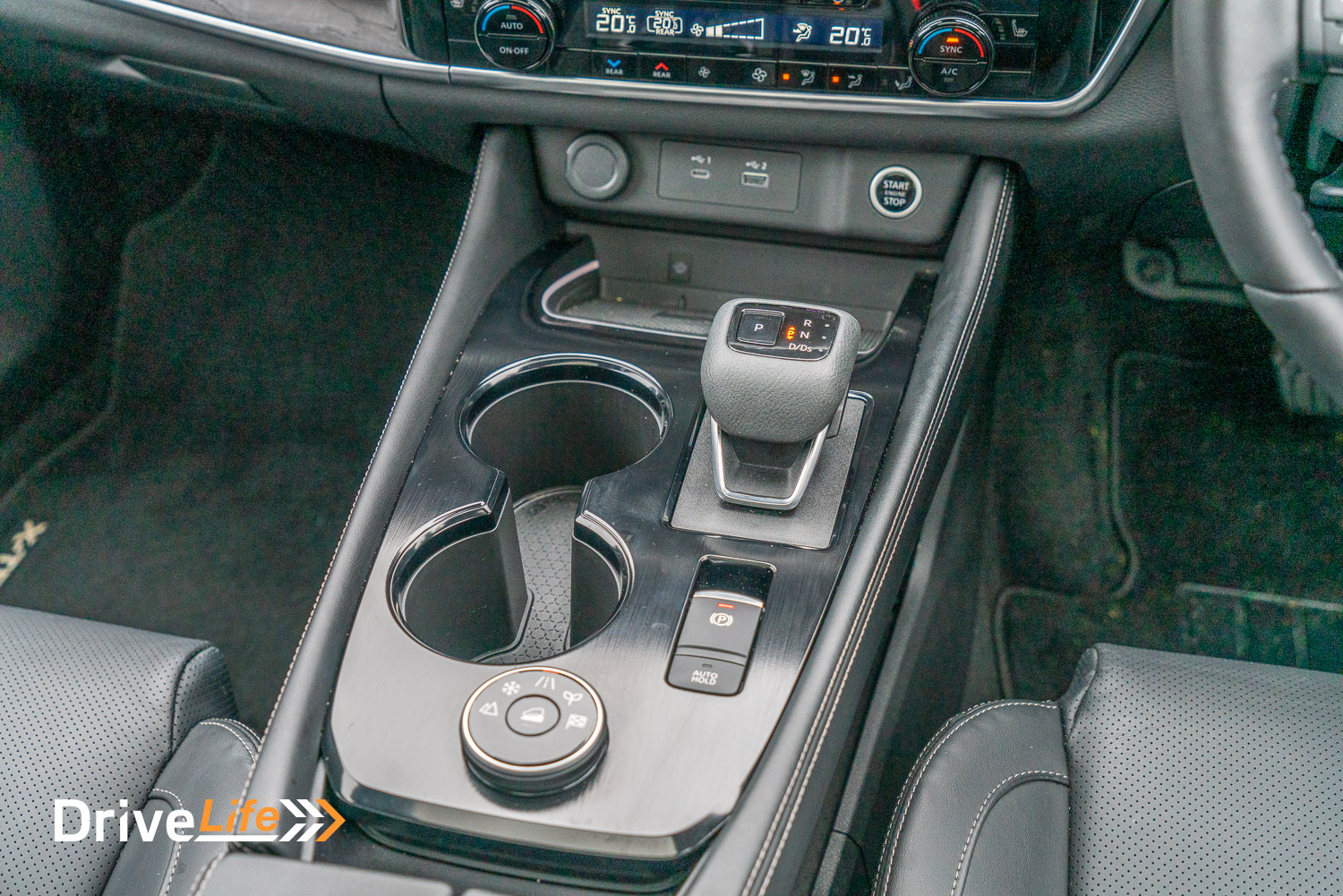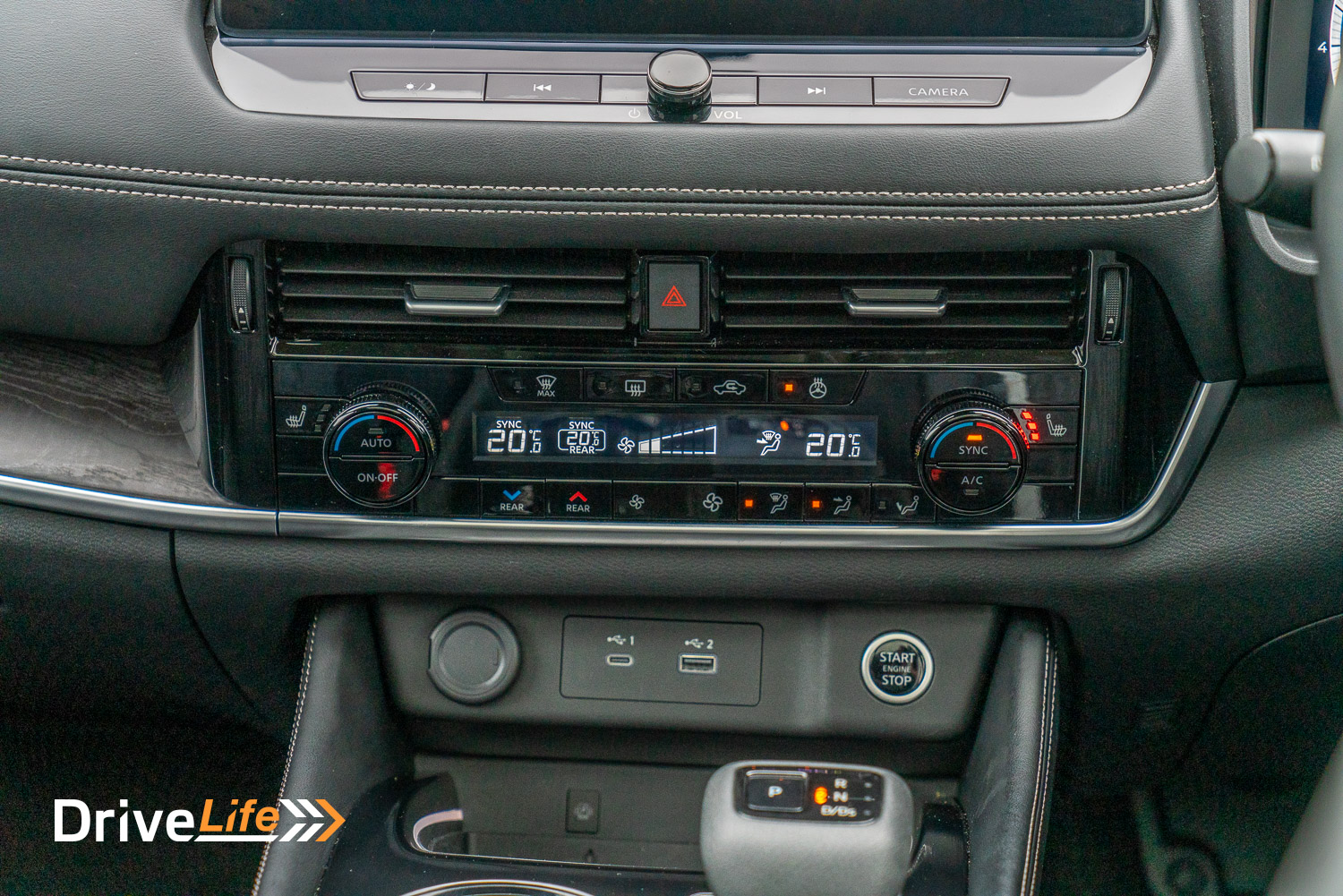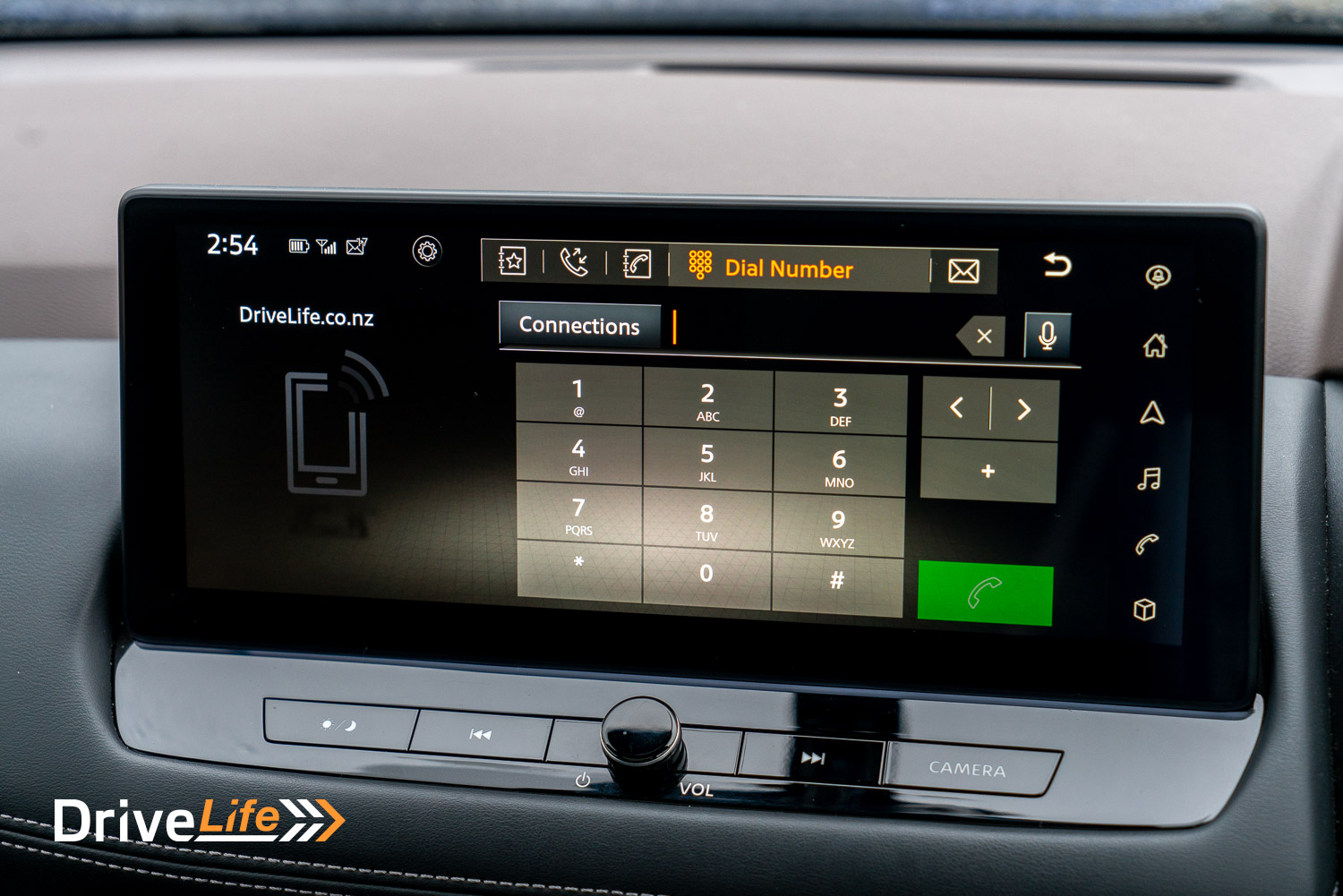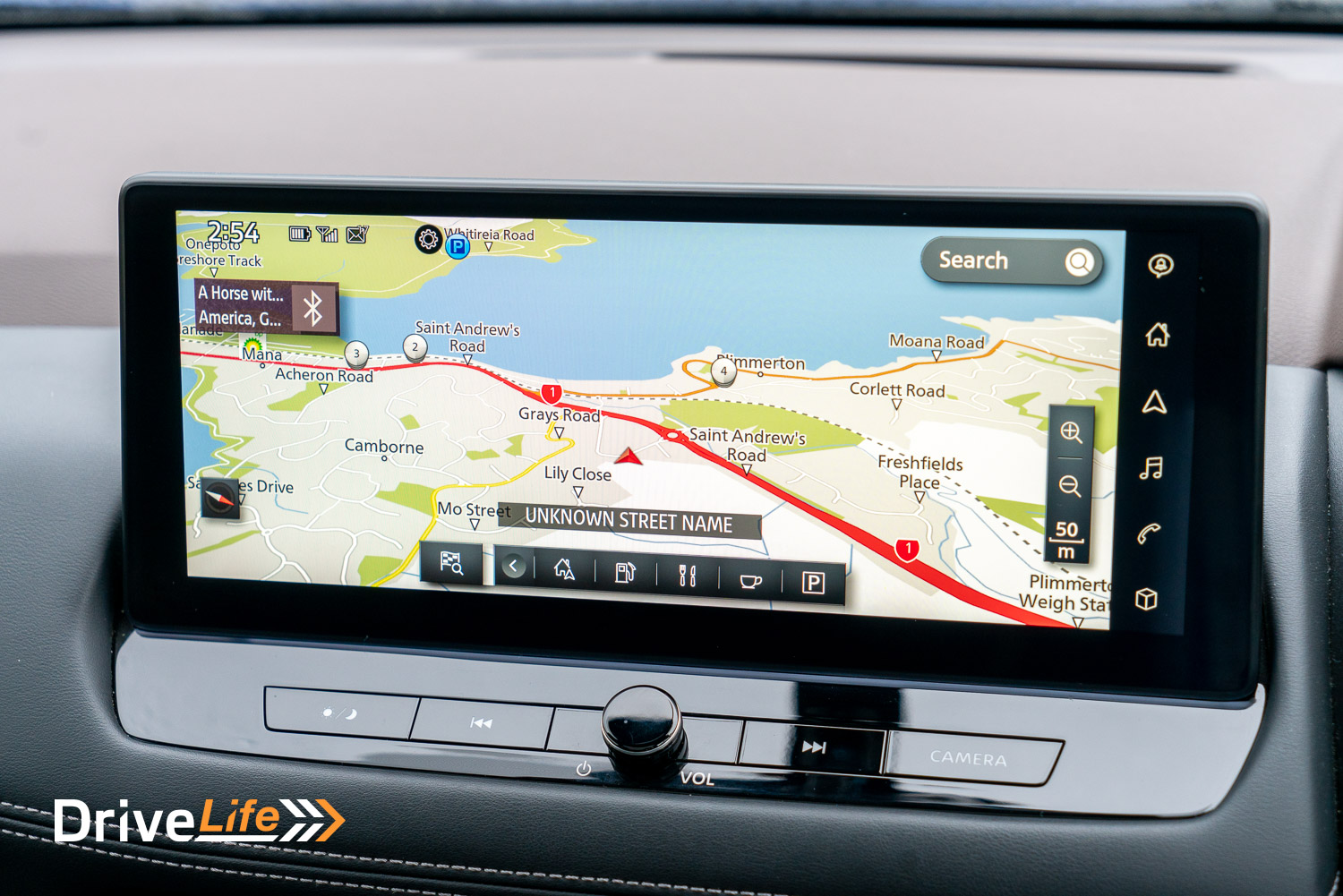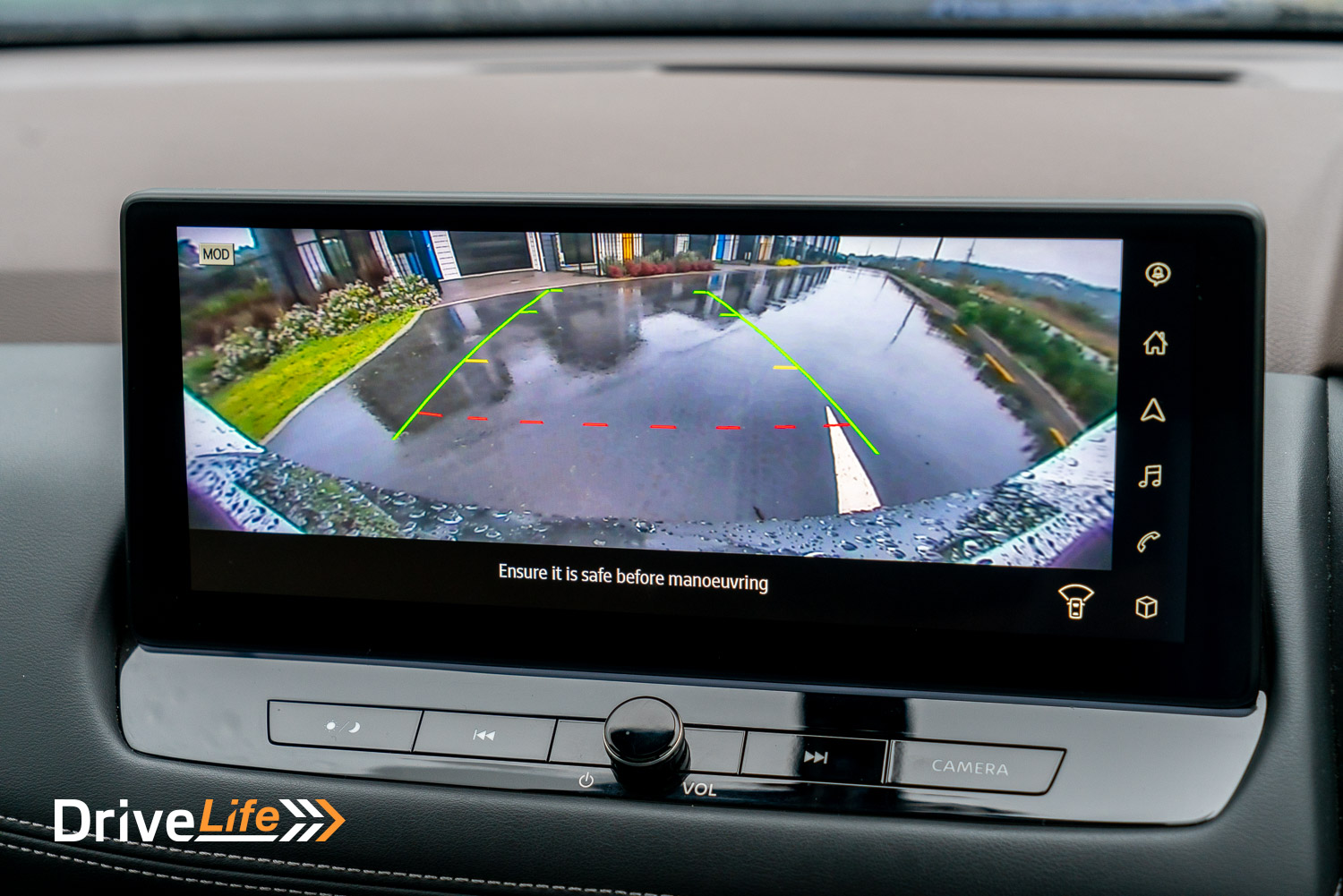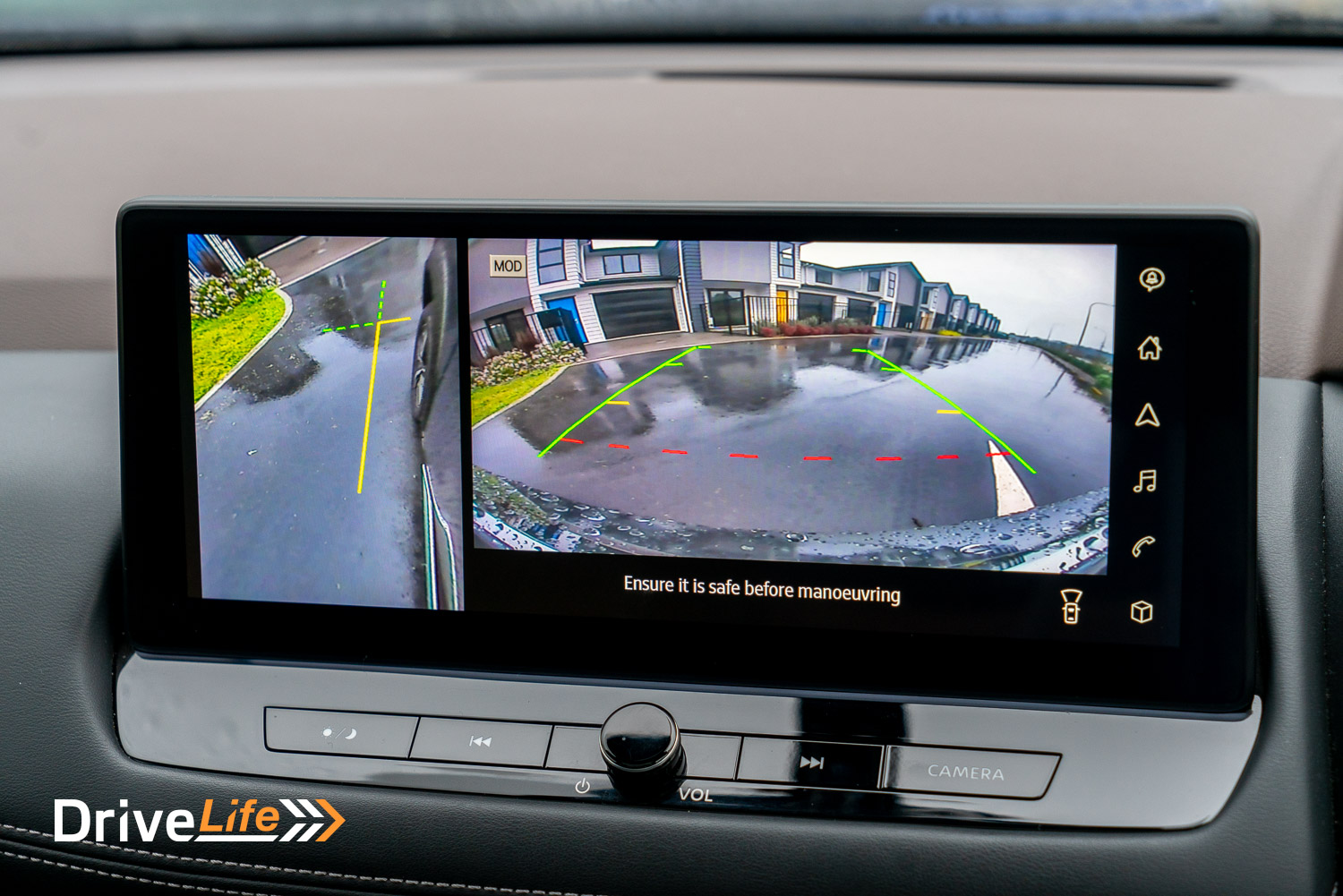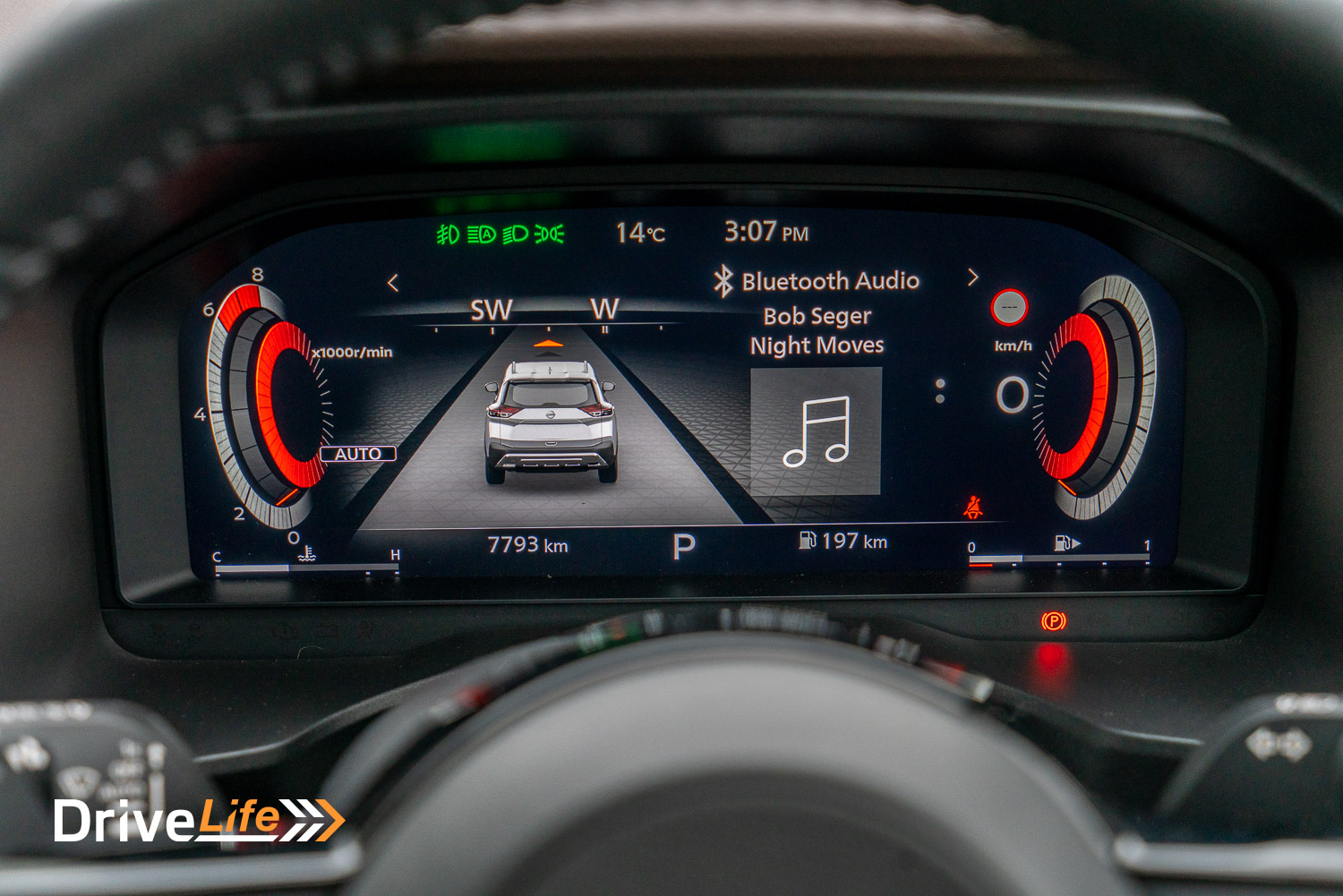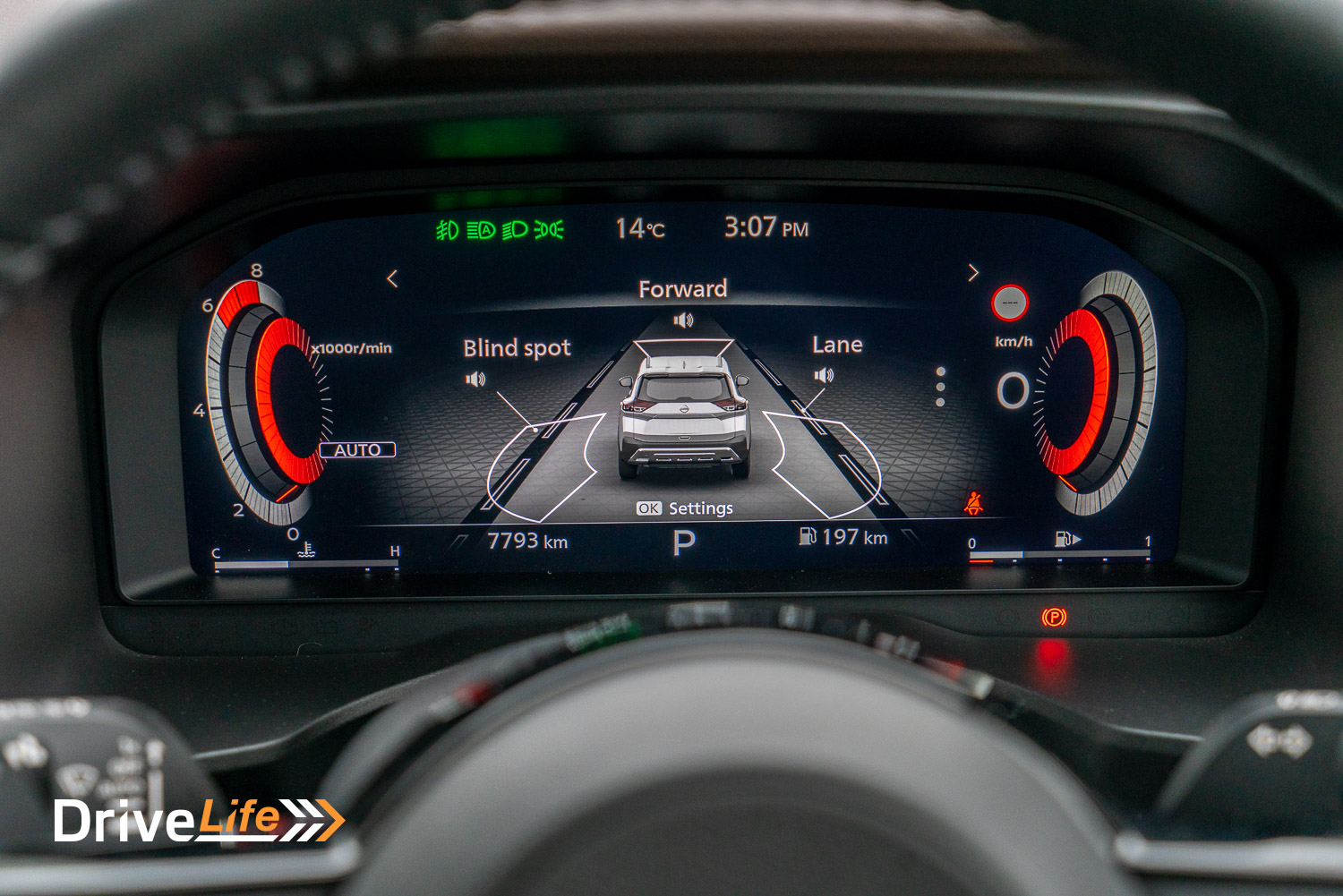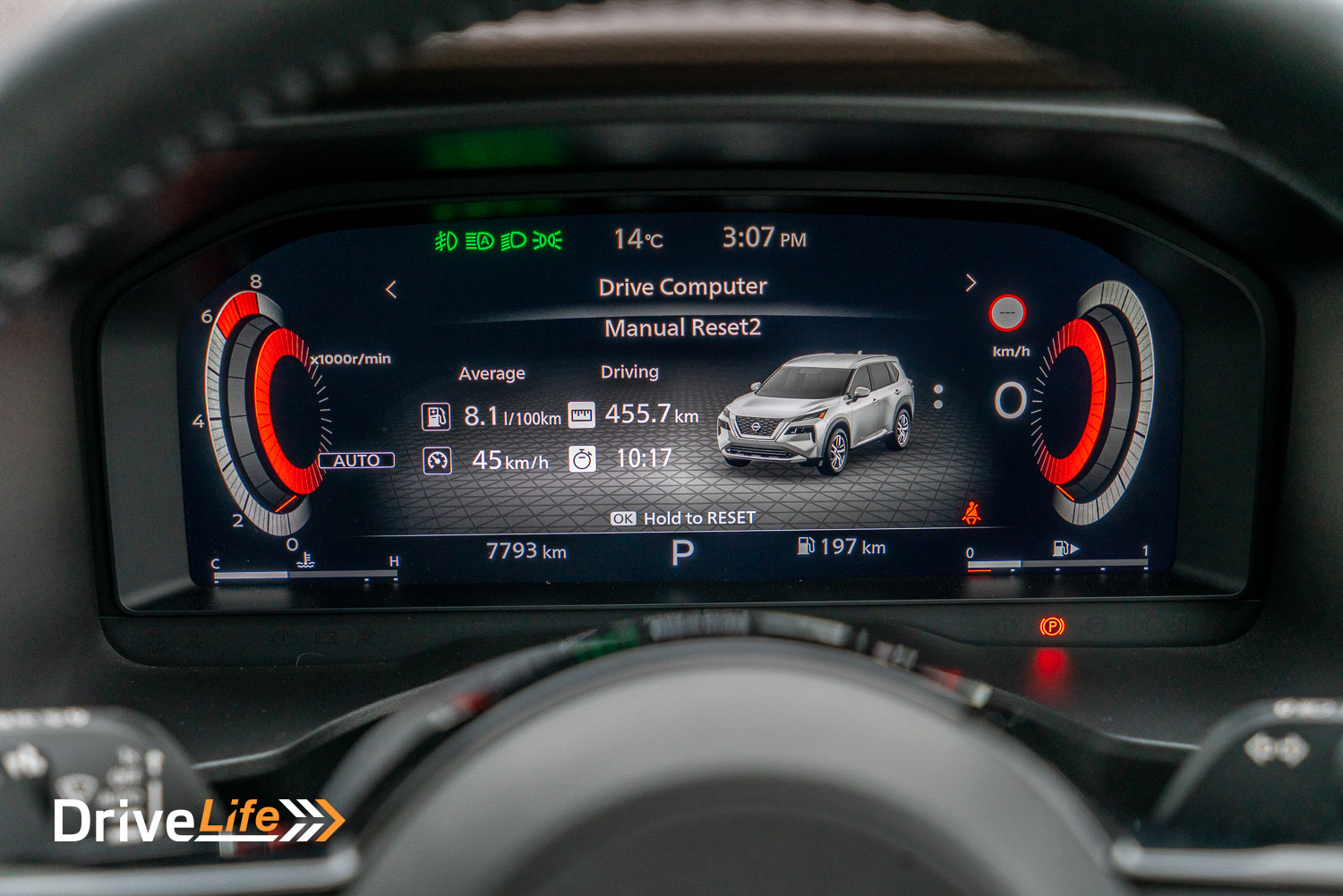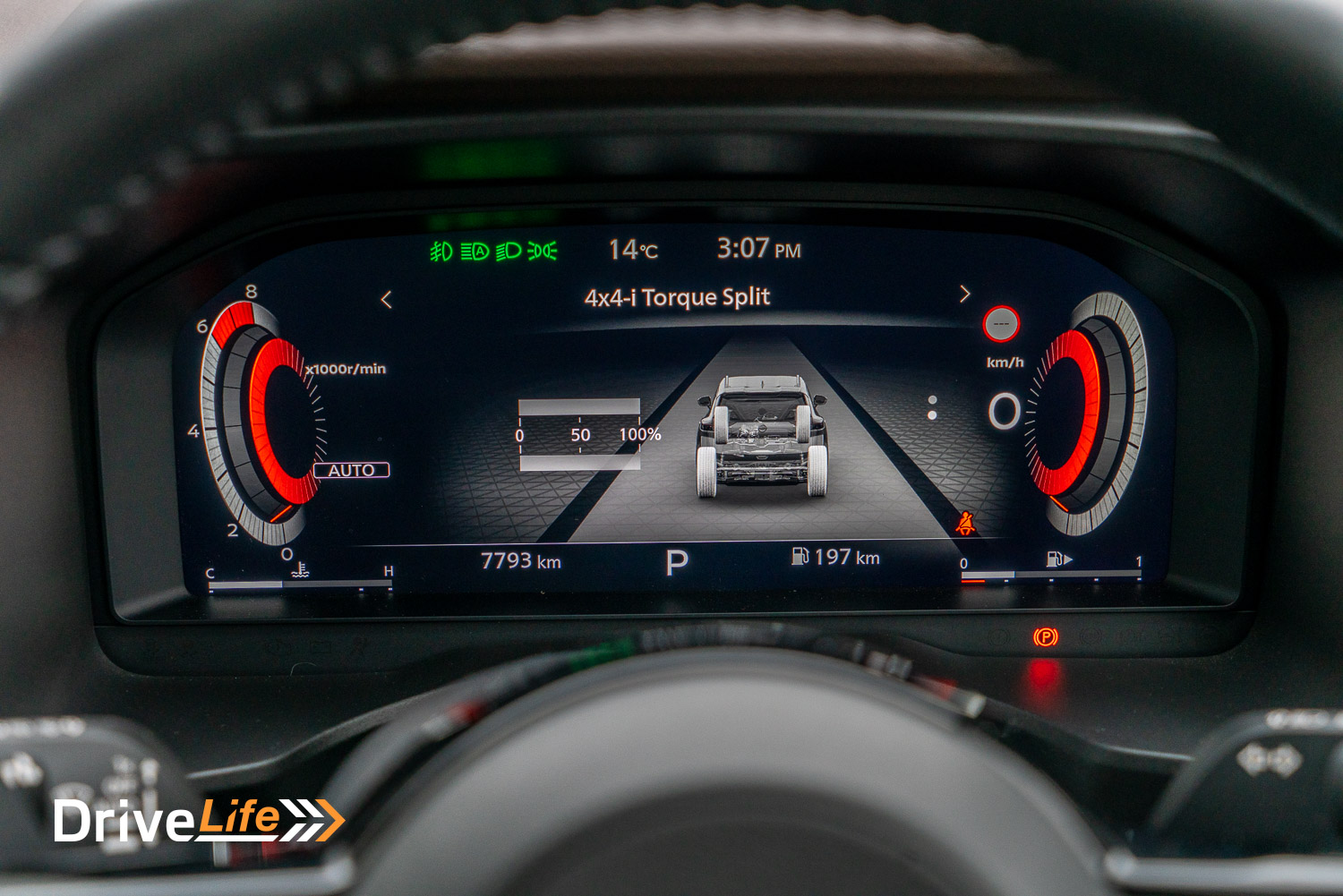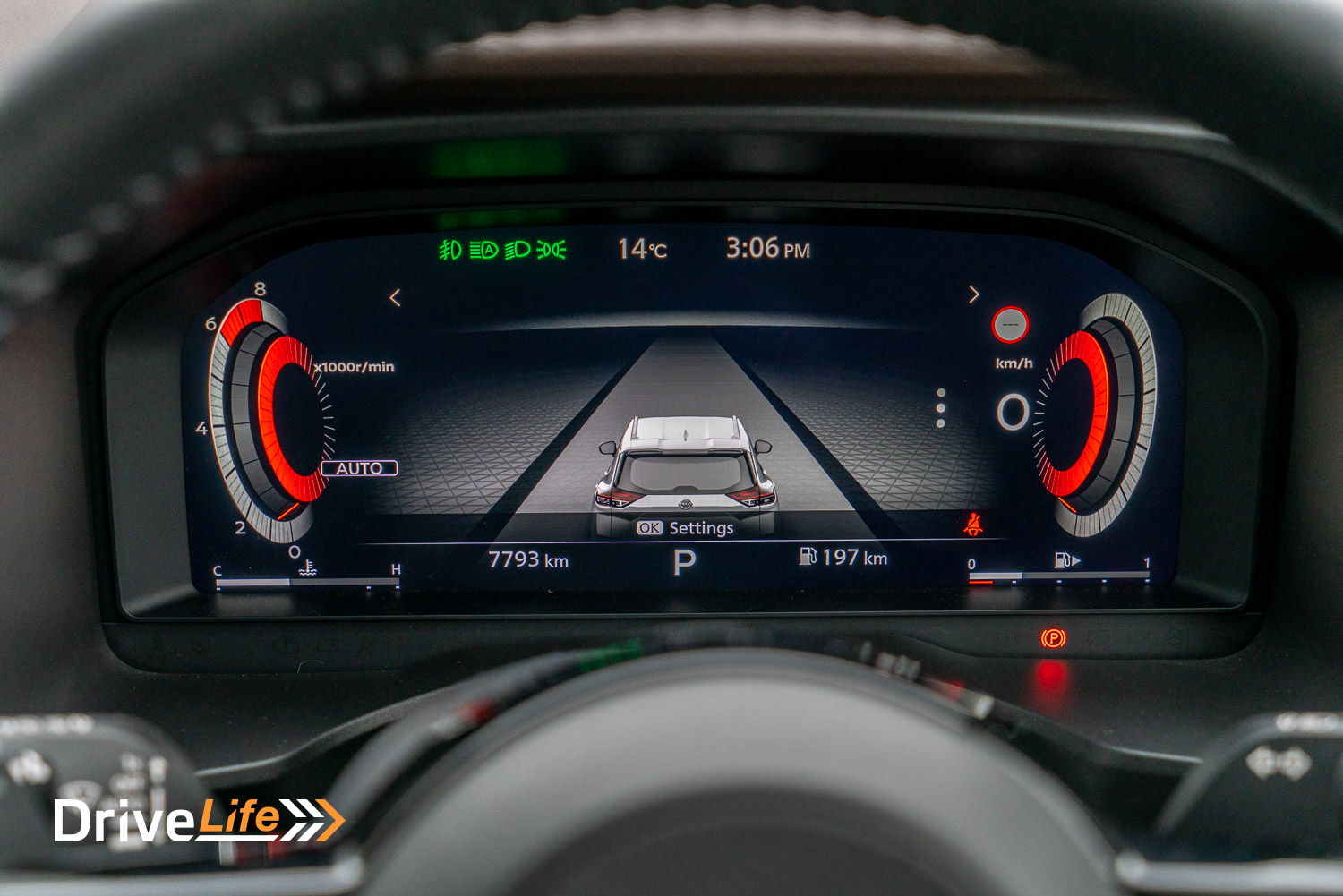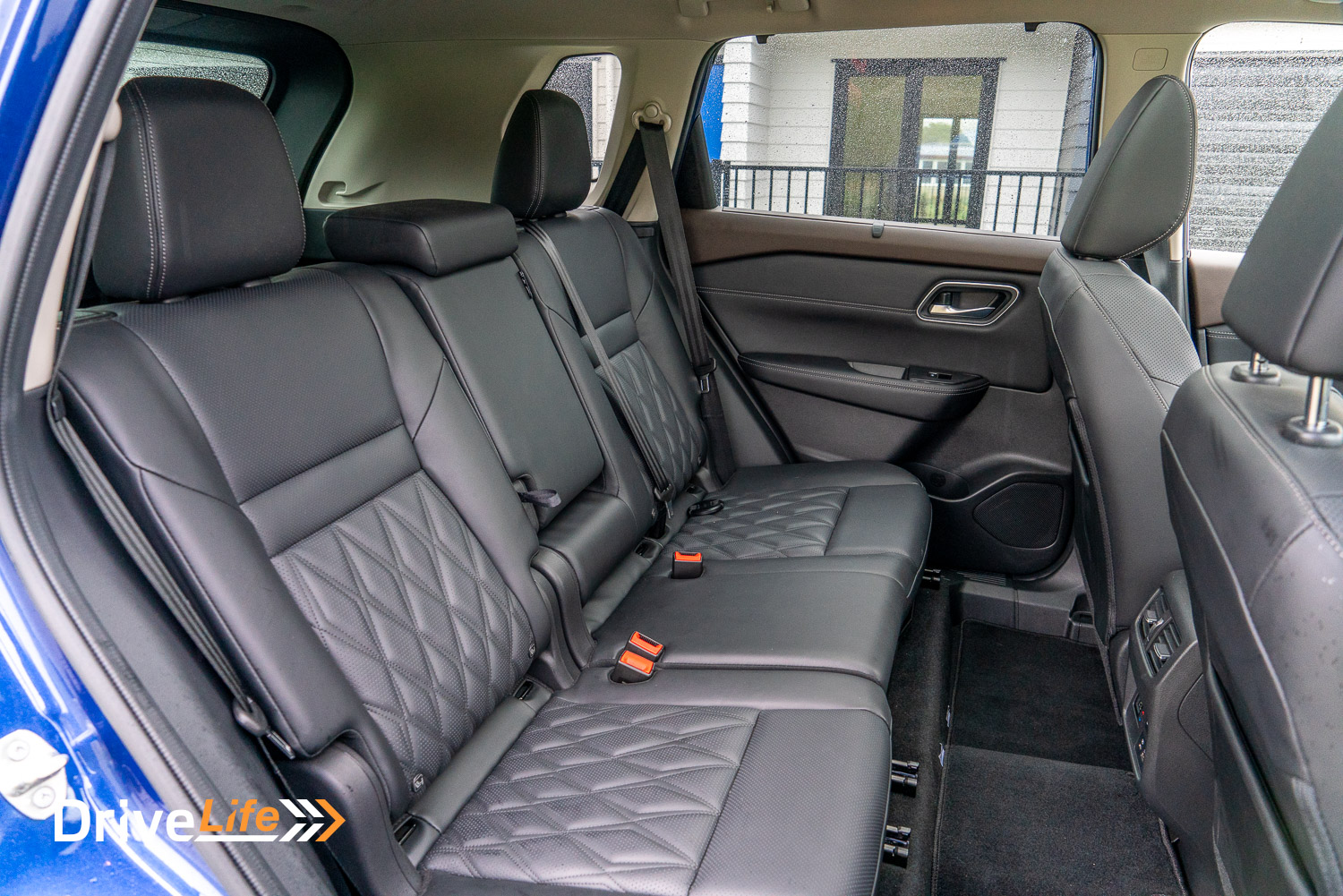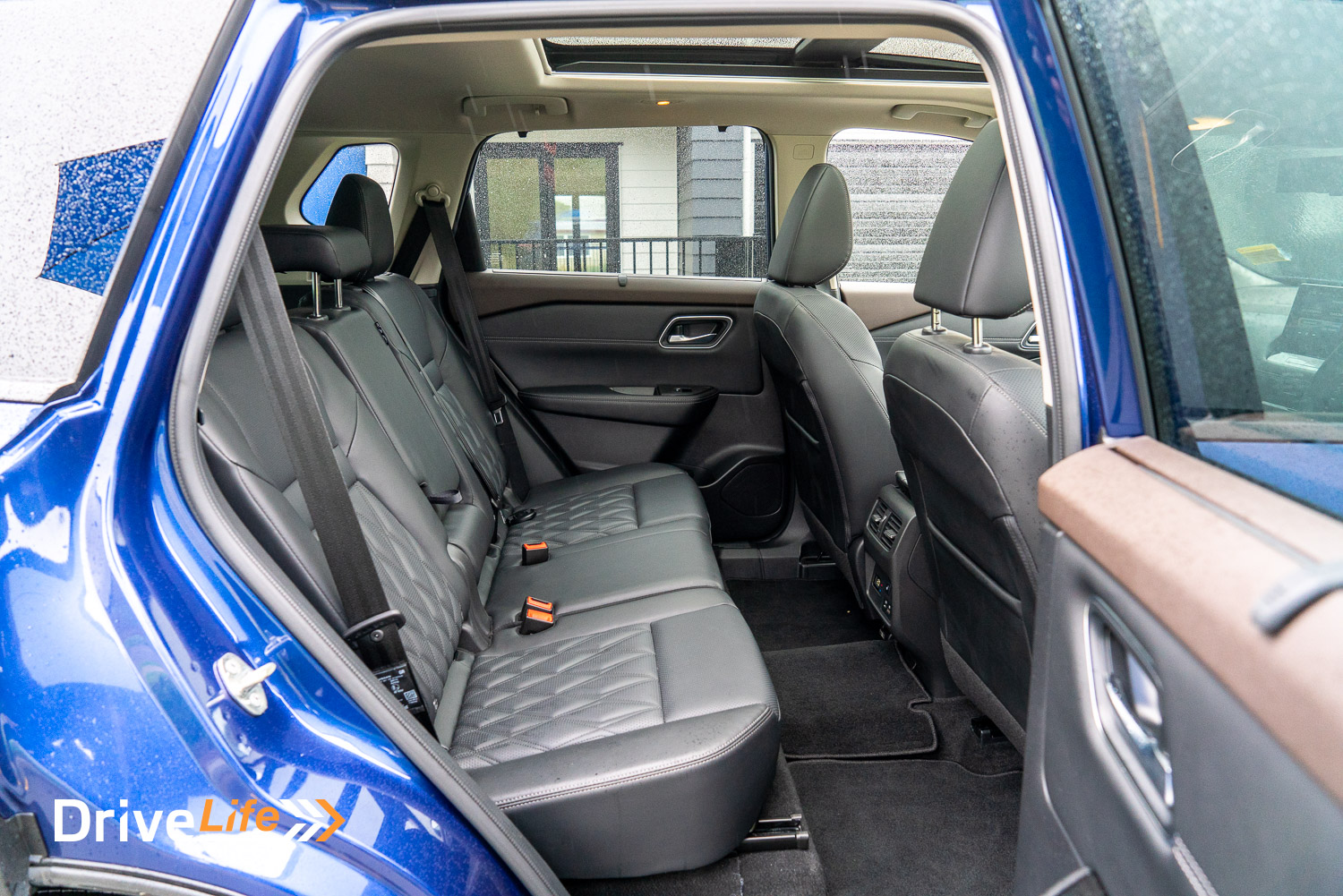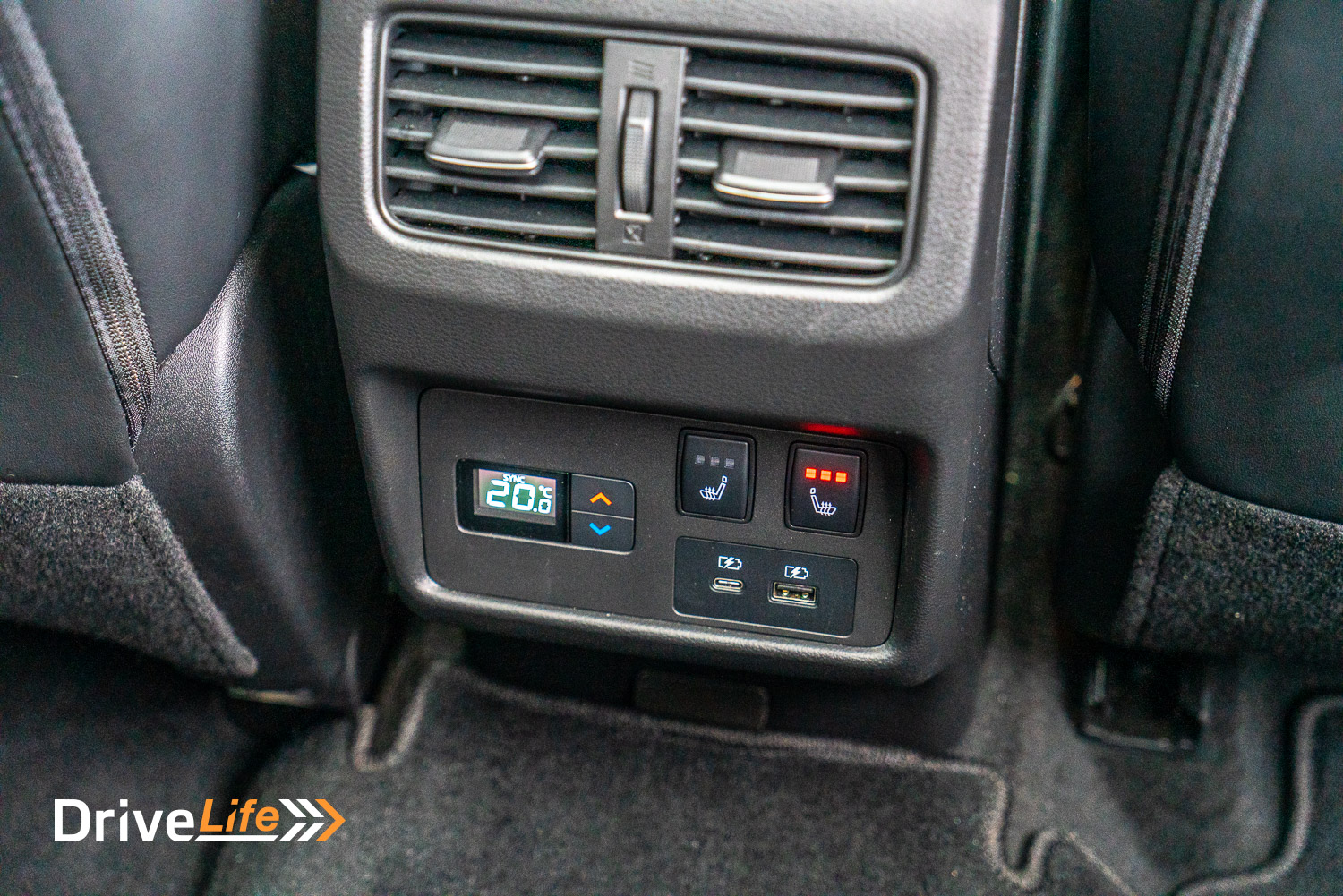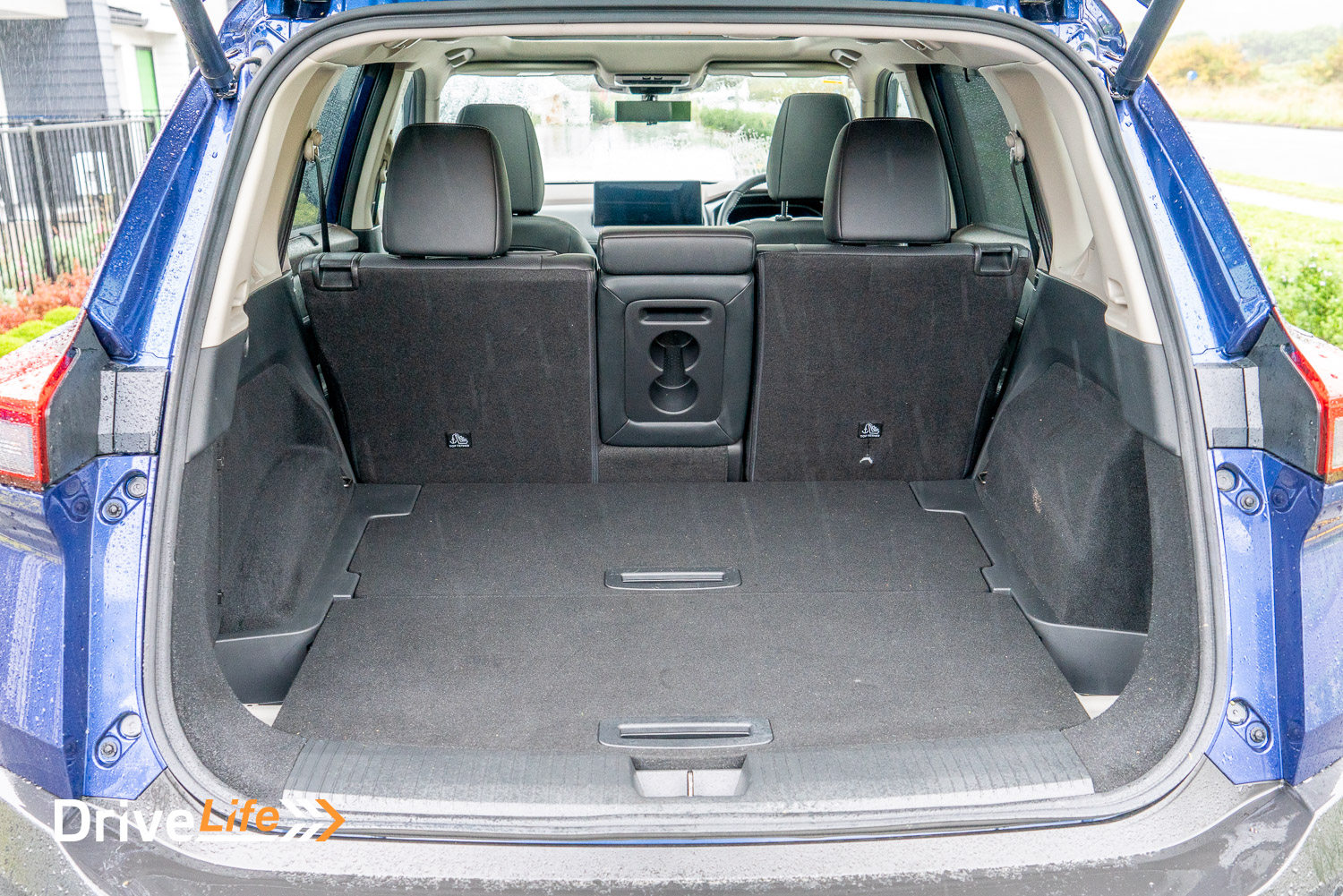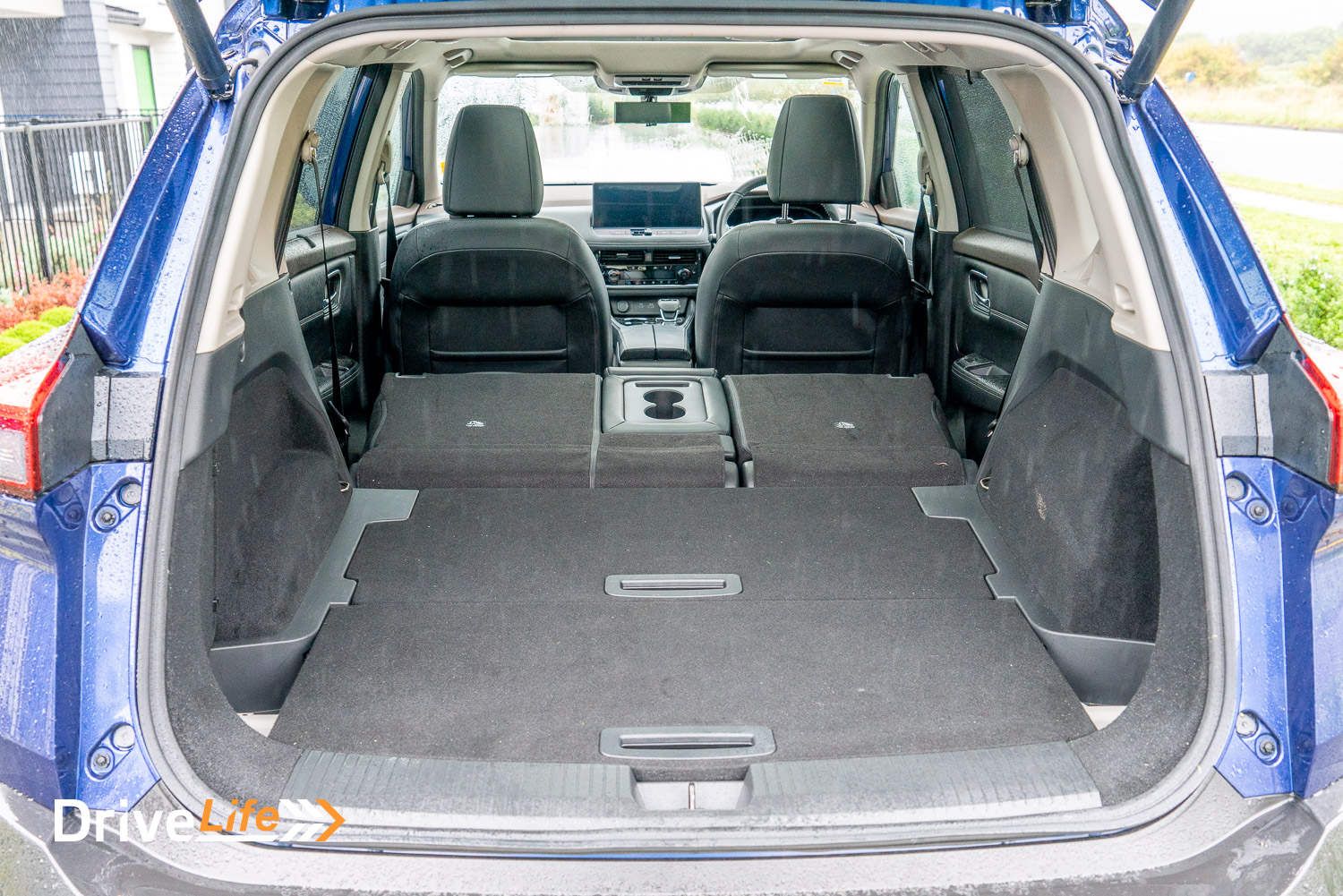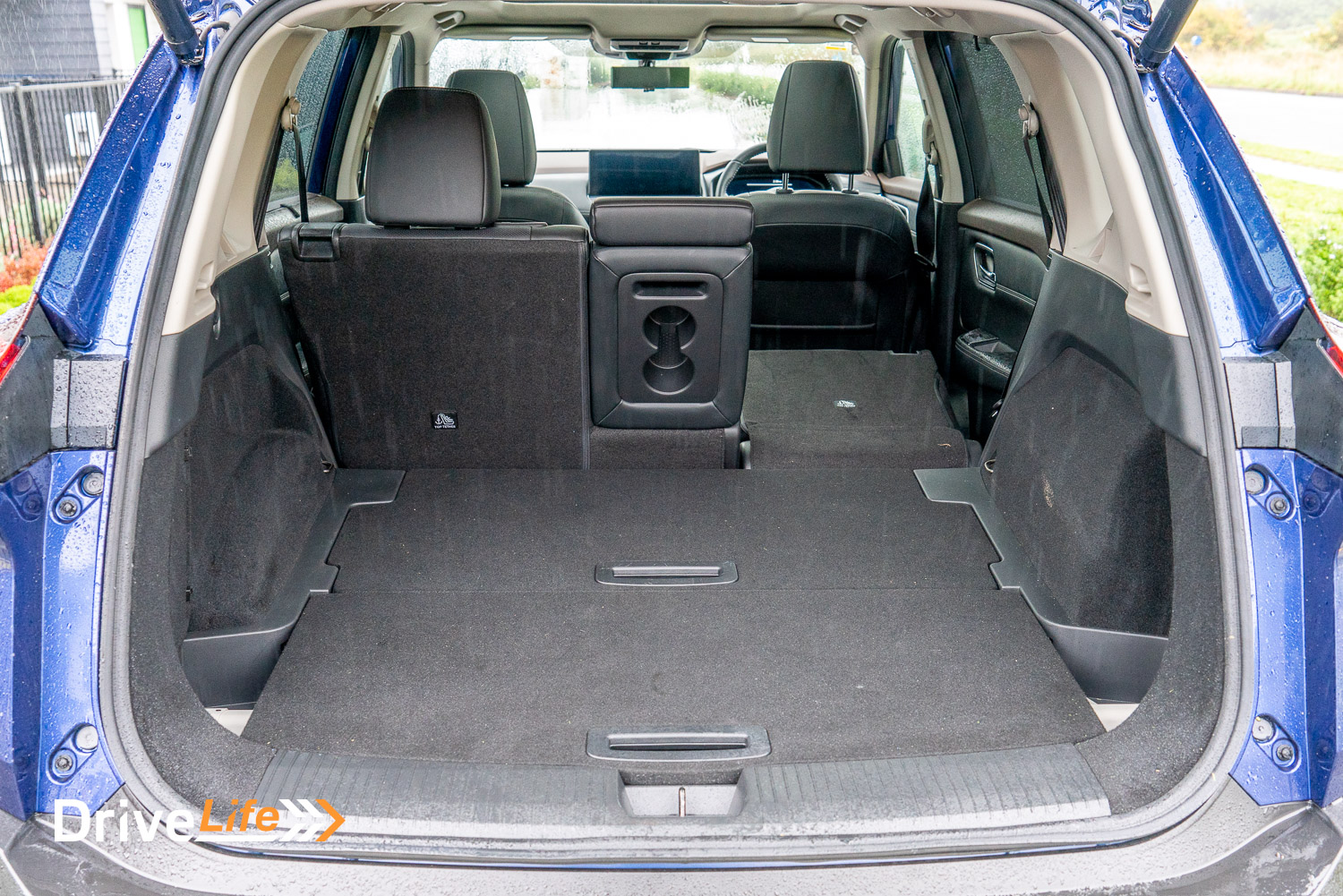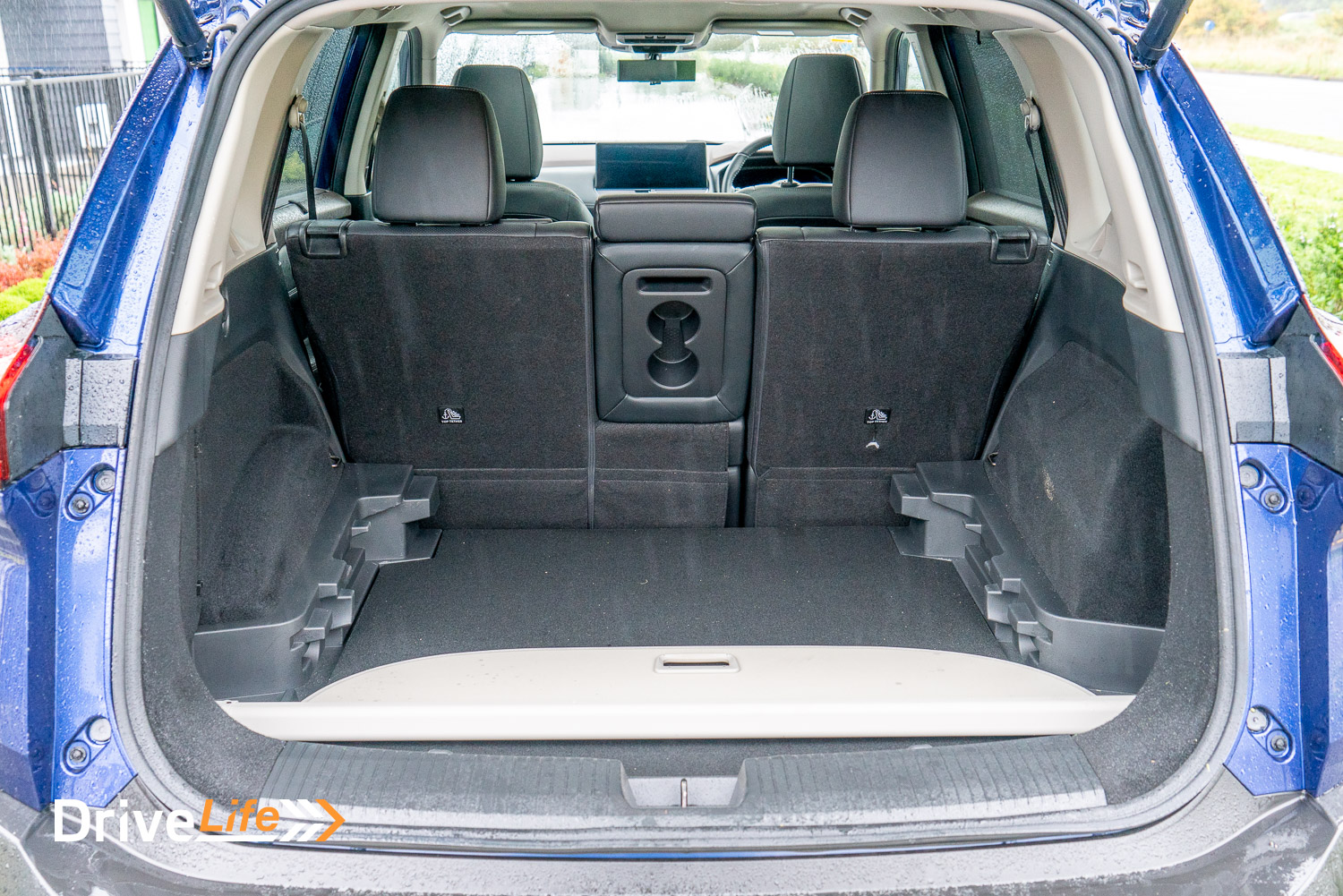The Nissan X-Trail is a stalwart in the mid-size crossover market, competing directly with other segment juggernauts such as the Toyota RAV-4 and the Mitsubishi Outlander.
So far, the X-Trail ranks 13th on the New Zealand new vehicle sales figures for 2023, which is a strong showing for Nissan given our consumer lust for utes, Toyotas and a developing taste for EVs.
Despite its relative sales success, sales of the X-Trail have always been bettered by the RAV-4, the Outlander and a handful of others over the years. One may speculate the reasons for its trailing sales, but Nissan seemed dead-set on changing its fortunes when it released the fourth-generation X-Trail in June 2020.
So, does the latest version have the talent to swipe at Toyota’s slice of the pie?
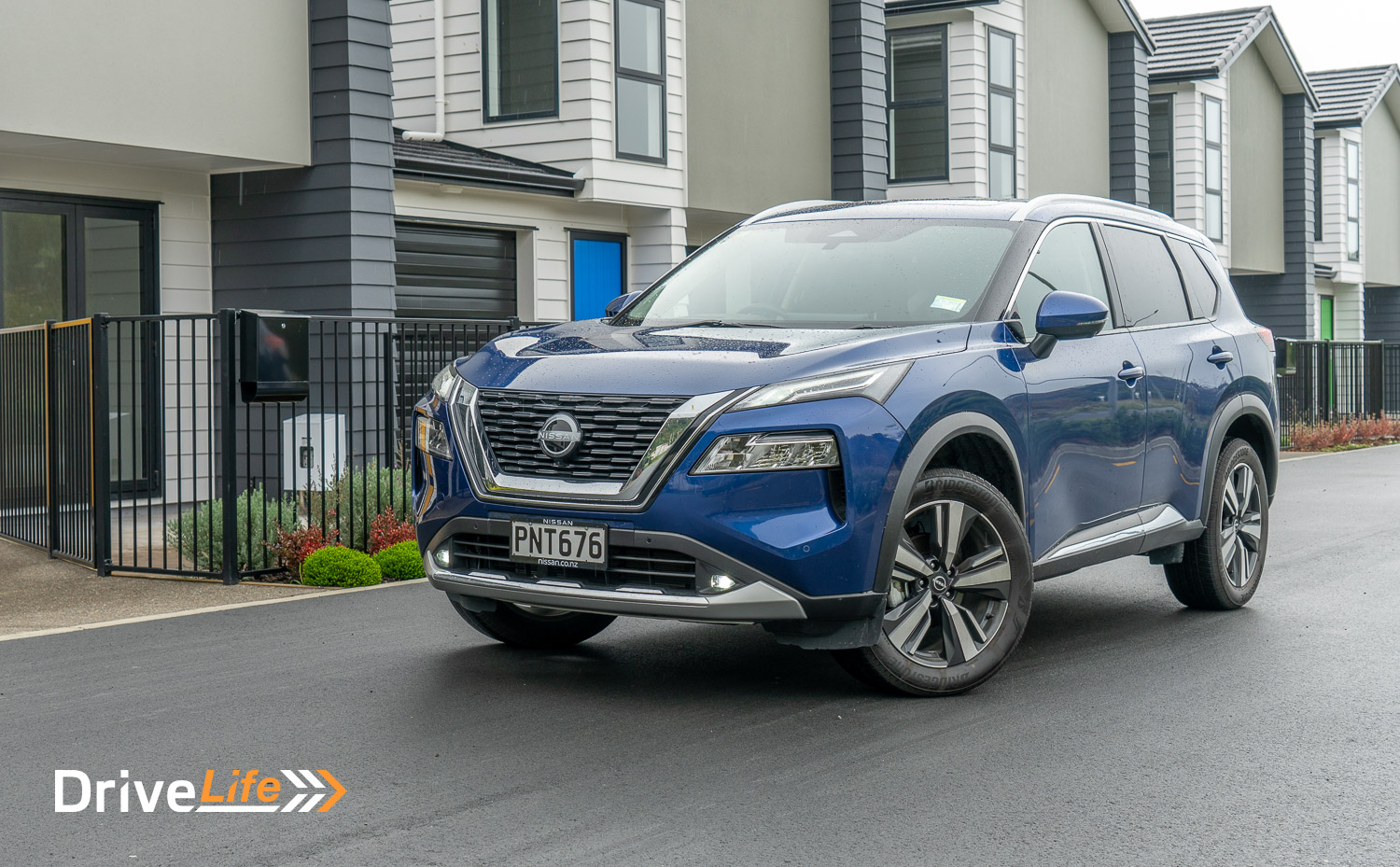
What We Like and Dislike About The 2023 Nissan X-Trail Ti-L
| What we like | What we don’t like |
| Ride quality Well-designed interior Fresh infotainment and interior tech Quality of driver aid software for class | Meh powertrain options Slightly on the expensive side Not much else |
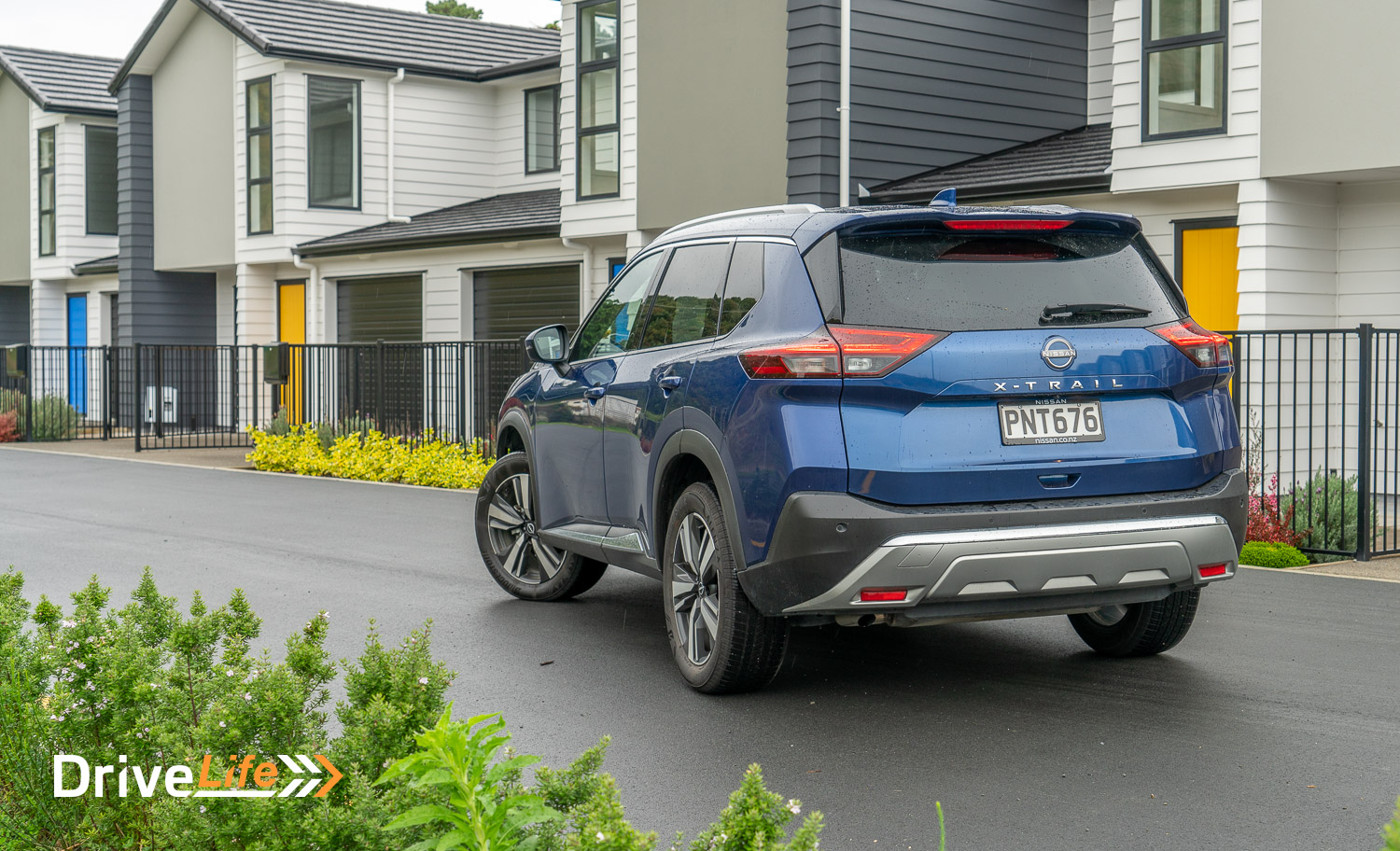
What’s In the 2023 Nissan X-Trail Ti-L Range?
There are three different trim-levels available for the Nissan X-Trail. The entry level ST, the mid-range ST-L, and the top-spec Ti-L.
There are also three different powertrain options available for X-Trail, but some you can only get in certain trims. Basically, you can have a petrol engine in front-wheel drive or all-wheel drive. Then, the third option is a petrol hybrid all-wheel drive.
The below table should make some sense of it.
| Model | Engine | Drive | Price |
| Nissan X-Trail ST | 2.5-litre 4-cylinder petrol | FWD | $47,990 |
| Nissan X-Trail ST | 2.5-litre 4-cylinder petrol | AWD | $49,990 |
| Nissan X-Trail ST-L | 2.5-litre 4-cylinder petrol | FWD | $53,990 |
| Nissan X-Trail ST-L | 2.5-litre 4-cylinder petrol | AWD | $55,990 |
| Nissan X-Trail ST-L | 1.5-litre 3-cylinder petrol hybrid with two-electric motors | Hybrid AWD | $62,990 |
| Nissan X-Trail Ti-L | 2.5-litre 4-cylinder petrol | AWD | $59,990 |
| Nissan X-Trail Ti-L | 1.5-litre 3-cylinder petrol hybrid with two-electric motors | Hybrid AWD | $66,990 |
Of the two engine options, the 2.5-litre 4-cylinder petrol produces 135kW of power and 244Nm of torque. The 1.5-litre 3-cylinder petrol hybrid is a bit hotter, producing a combined output of 150kW of power and 330Nm of torque.
The X-Trail is offered with 5 or 7 seats, but if you want the 7-seats, you’ll have to go for the ST-L spec.
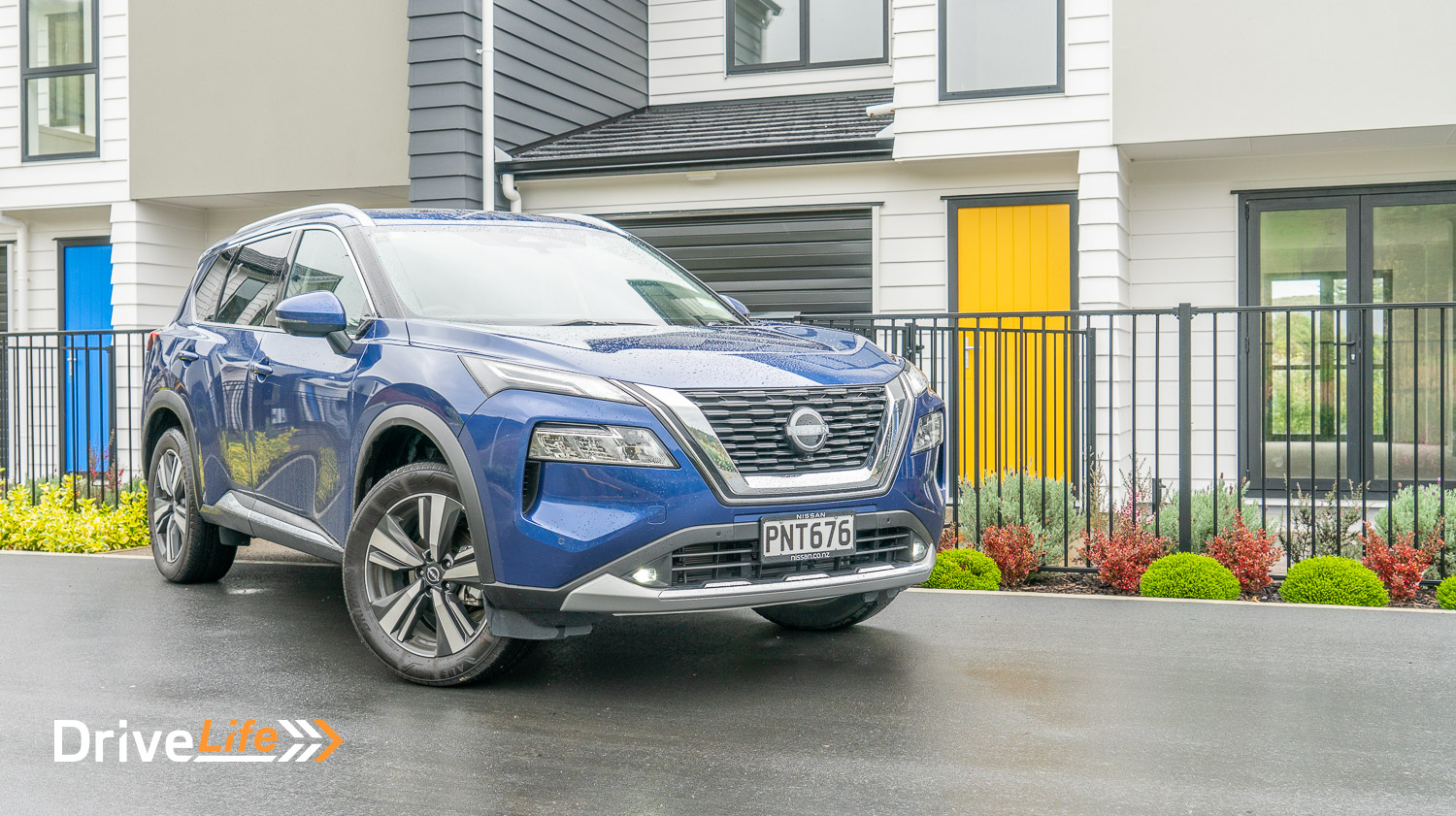
2023 Nissan X-Trail Ti-L Standard Equipment Highlights
The entry-level ST offers:
- 17” alloy wheels
- 4-way manually adjustable passenger seat
- 6 speaker audio system
- 6-way manually adjustable driver seat w 2-way power adjustable driver lumbar
- 7.0″ Digital instrument cluster
- 8.0″ infotainment with Apple CarPlay, Android Auto and Bluetooth
- Air conditioning
- Automatic headlights
- Black Cloth seat trim
- High Beam Assist
- LED daytime running lights
- LED head-lights and tail-lights
- LED high mounted stop light
- LED turn signals
- Power adjustable, heated external rear vision mirrors
- Push button start
- Reverse camera
- Rear parking sensors
The mid spec ST-L adds:
- 18” alloy wheels
- 8-way power adjustable driver seat
- Automatic dimming rear-view mirror
- Dual Zone Climate Control
- Front parking sensors
- Heated front seats
- Leather seat trim
- Leather steering wheel
- LED Fog lights
- Nissan ProPilot (Lane centring assistance)
- Privacy Glass
- Slide and recline second row seats
- Top-down camera with object detection
- Tyre Pressure monitoring
In addition to the ST-L, the top-spec Ti-L adds:
- 10 Speaker Bose Audio System
- 10.8″ Head-Up Display
- 12.3’’ Infotainment with Satnav
- 8-Way Power Adjustable Driver and Passenger Seat, With Driver Memory
- Adaptive Hi-Beams
- Ambient Interior Lighting
- Automatic Rain Sensing Front Wipers
- Built-In Rear Door Sunshades
- Configurable Cargo System
- Heated Second Row Seats (Outboard)
- Heated Steering Wheel
- Intelligent Rear View Mirror (Rear Camera-View)
- Panoramic Glass Roof.
- Power Tailgate
- Remote Engine Start
- Tri Zone Climate Control
- Wireless Apple Carplay
- Wireless Smartphone Charger
There’s also a suite of safety features that come standard with all X-Trail models.
- 7-airbags
- Adaptive Cruise Control
- Blind Spot Warning
- Blind Spot Intervention
- Emergency Braking with junction assist & pedestrian/cyclist detection
- Forward Collision Warning
- Lane Departure Warning and Lane Intervention
- Intelligent Driver Alert
- Rear Cross Traffic Alert
- Rear emergency braking with pedestrian detection
- Rear seat alert
- Speed limiter
- Traffic Sign Recognition
- Trailer sway control
- Vehicle Dynamic Control (VDC)
- Traction Control System (TCS)
There are 8 colours to choose from for your X-Trail. With 5 of those colours, you can have a contrast black roof, making 13 possible colour combinations. Why isn’t a black roof available with all colours? I’m not sure either. At least it’s available with no added cost.
- Sunset Orange
- Scarlet Ember
- Caspian Blue
- Brilliant Silver
- Gun Metallic
- Diamond Black
- Champaign Silver
- Ceramic Grey
- Ivory Pearl
- Sunset Orange with a black roof
- Ceramic Grey with a black roof
- Ivory Pearl with a black roof
- Caspian Blue with a black roof
- Champaign Silver with a black roof
For more information on Nissan X-Trail, check out the Nissan New Zealand website.
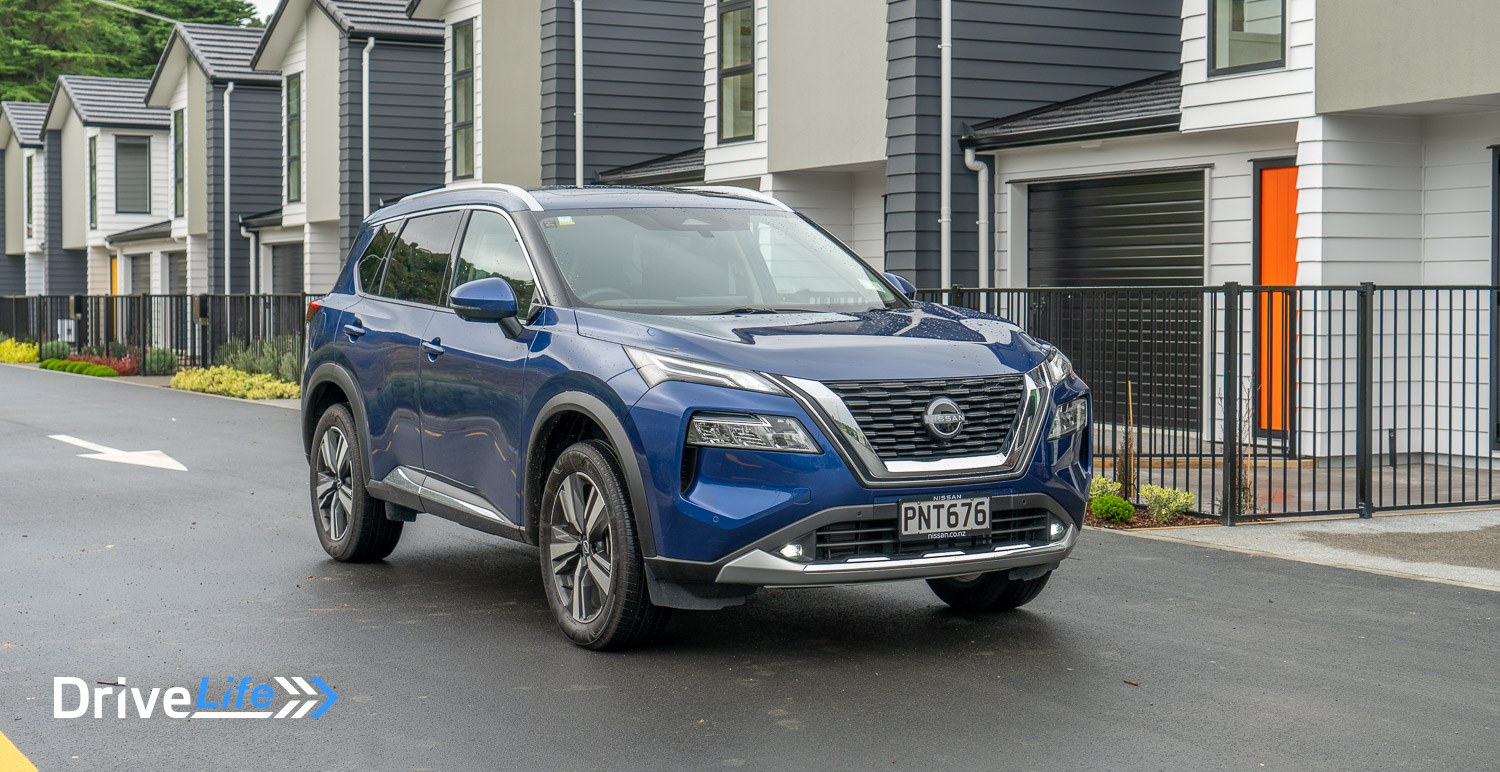
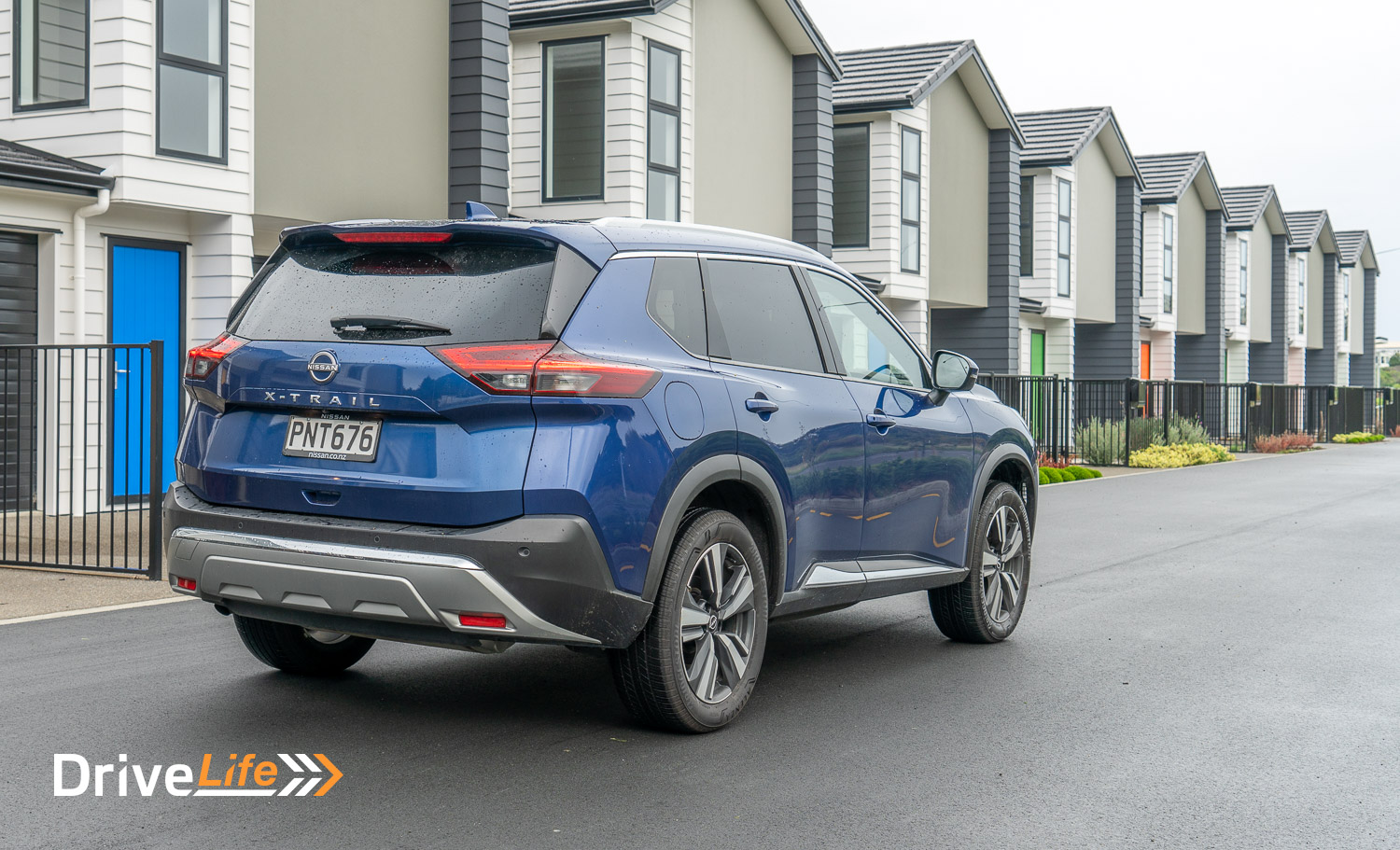
How Does The 2023 Nissan X-Trail Ti-L Compare To Its Competition?
Below are some of your alternatives to the Nissan X-Trail TI-L. We’ve included the hybrids in the list, because realistically many would be cross shopping between those and this X-Trail. The hybrid X-Trail is also included. All prices below exclude the refund or additional cost of the New Zealand Clean Car Programme.
| Make/Model | Engine | Power/Torque (kW/Nm) | Seats | Fuel (L/100km) | Towing Capacity (Kg) | Boot space (litres) | Price (excl CCP) |
| Mitsubishi Outlander PHEV VRX | 2.5-litre 4-cylinder | 183/450 | 5 | 1.6 | 750/1600 | 640 | $75,990 |
| Hyundai Tucson Limited | 1.6-litre 4-cylinder turbo | 132/265 | 5 | 7.7 | 750/1650 | 620 | $68,990 |
| Nissan X-Trail Ti-L e-Power | 1.5-litre 3-cylinder hybrid | 150/330 | 5 | 6.8 | 750/1650 | 575 | $66,990 |
| Mazda CX-5 Takami | 2.5-litre 4-cylinder turbo | 170/420 | 5 | 9.1 | 750/2000 | 401 | $66,890 |
| Hyundai Tucson 1.6T Elite Hybrid | 1.6-litre 4-cylinder turbo hybrid | 169/350 | 5 | 5.6 | 750/1650 | 503 | $65,990 |
| Volkswagen Tiguan Style AWD | 2-litre 4-cylinder turbo | 140/320 | 5 | 8.4 | 750/2100 | 615 | $63,990 |
| Skoda Karoq Sportline | 2-litre 4-cylinder turbo | 140/320 | 5 | 7.3 | 750/2100 | 521 | $63,990 |
| Peugeot 3008 GT | 1.6-litre 4-cylinder turbo | 134/250 | 5 | 6.2 | 750/2000 | 591 | $60,990 |
| Ford Escape ST-Line X Hybrid | 2-litre 4-cylinder turbo | 140/- | 5 | 5.6 | 750/1500 | 556 | $59,990 |
| Nissan X-Trail Ti-L | 2.5-litre 4-cylinder | 135/244 | 5 | 8.7 | 750/2000 | 585 | $59,990 |
| Toyota RAV-4 Adventure Hybrid | 2.5-litre 4-cylinder hybrid | 131/221 | 5 | 5.3 | 750/1500 | 580 | $59,890 |
| Citroen C5 Aircross Shine | 1.6-litre 4-cylinder turbo | 134/250 | 5 | 6.3 | 750/1500 | 580 | $58,990 |
| Kia Sportage X-Line AWD | 1.6-litre 4-cylinder turbo | 132/265 | 5 | 8.0 | 750/1650 | 543 | $58,290 |
| MG HS Essence PHEV | 1.5-litre 4-cylinder turbo hybrid | 189/370 | 5 | 1.7 | 750/1500 | 451 | $56,990 |
| Mitsubishi Outlander VRX | 2.5-litre 4-cylinder | 135/244 | 5 | 9.0 | 750/1600 | 655 | $57,990 |
| Honda ZR-V Sport | 2.0-litre 4-cylinder hybrid | 135/315 | 5 | 5.5 | 700/1500 | 370 | $55,000 |
| Honda CR-V Sport Premium | 1.5-litre 4-cylinder turbo | 140/240 | 5 | 8.2 | 750/1500 | 522 | $54,000 |
| Seat Ateca 4FR | 2-litre 4-cylinder turbo | 140/320 | 5 | 8.0 | 750/2000 | 485 | $53,500 |
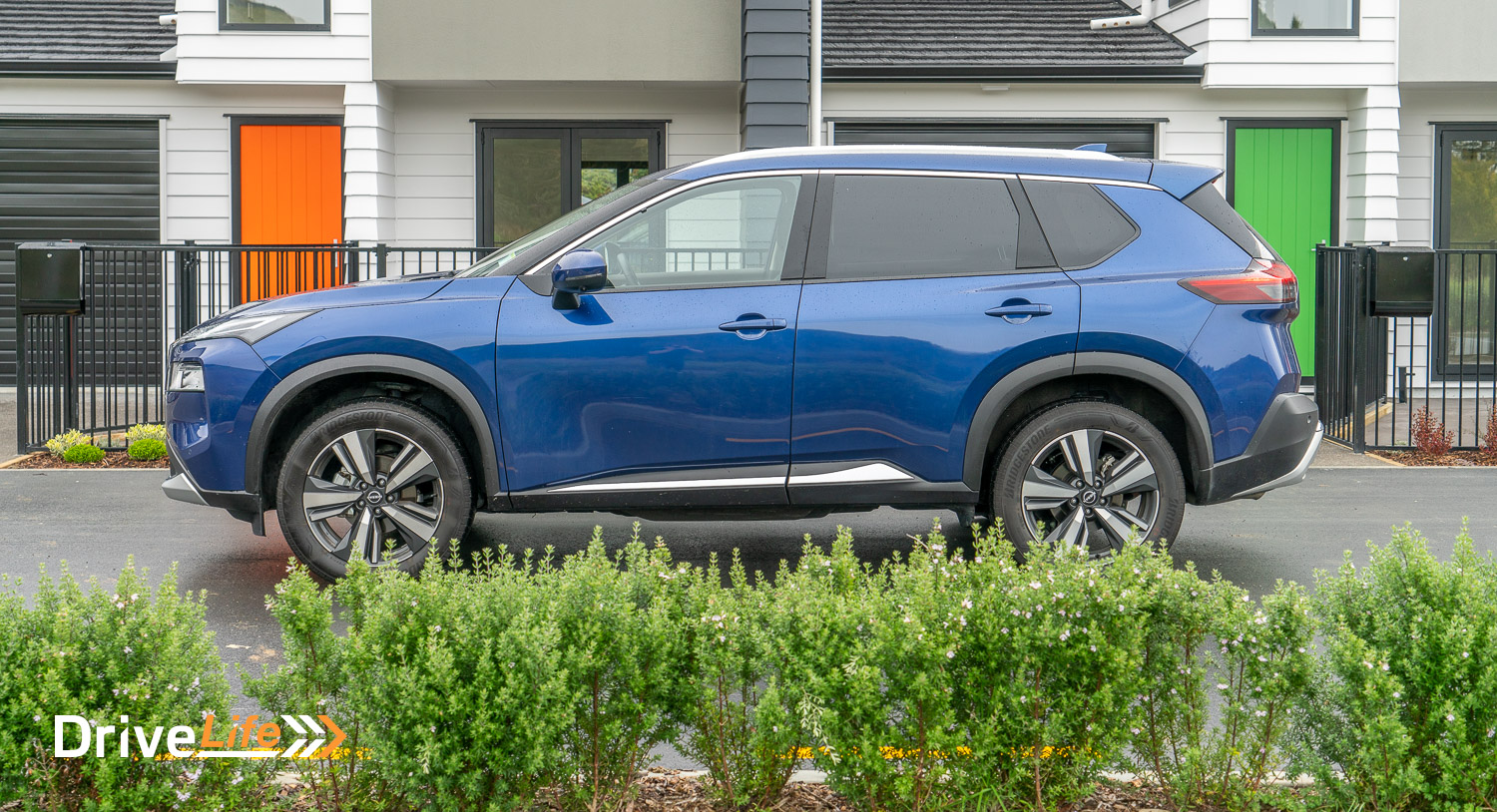
First Impressions Of The 2023 Nissan X-Trail Ti-L
Those that remember earlier generation Nissan X-Trails will likely recall their boxy aesthetic. Since then, the X-Trail has developed a blobbier shape as it has matured. I suppose it’s not all that surprising to say that as we mature, we tend to get blobbier.
Fortunately, Nissan’s found their mojo again with the fourth-generation X-Trail. This new X-Trail’s more sculpted body is rather handsome to my eyes.
I also appreciate that Nissan has a wide array of colours available for this X-Trail, which are offered at no added charge. Make cars colourful again, I say.
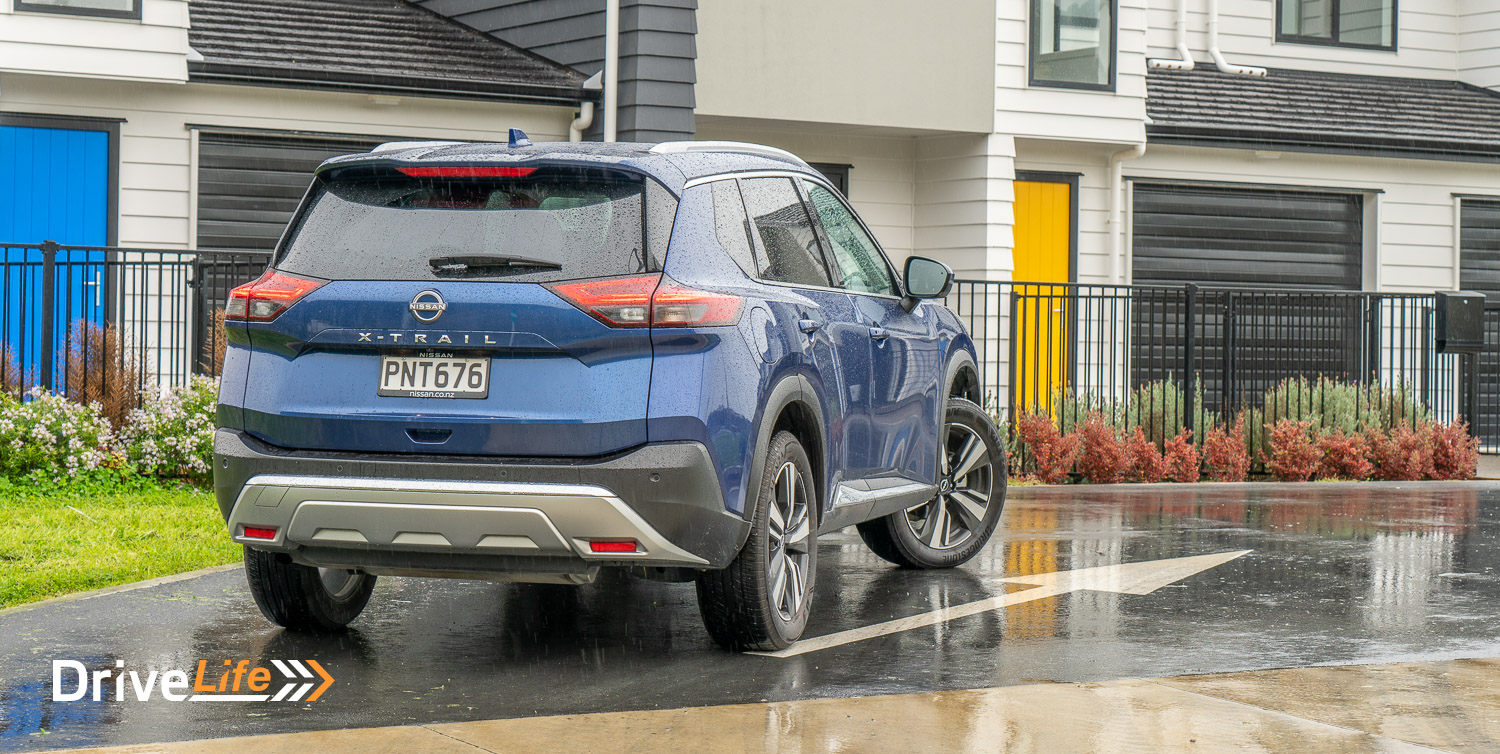
What’s The Interior Like In The 2023 Nissan X-Trail Ti-L?
Since the merger between Nissan and Renault in 2002, Nissan began to adopt a value focus for their cars.
Nissan, trading on their 1990’s reputation for Toyota-like reliability, began engineering cars that were packed with features, yet charged less than the competition. In the United States, Nissan heavily pushed their new cars with attractive financing deals. This strategy lifted Nissan out from under the financial woes it had carried from the 1990’s.
However, it wasn’t all roses for Nissan. Over the same period, Nissan’s reputation for quality and reliability began to wane. New Nissan’s were criticised for being cheaply made, being accused of having rattly interiors and drivetrains that simply didn’t have the longevity of other Japanese brands.
Fast-forward to 2023, Nissan appears to be dead-set on fixing that reputation. Having driven the new X-trial, I can assure you that any allegation of ‘cheap and nasty’ will no longer stick.
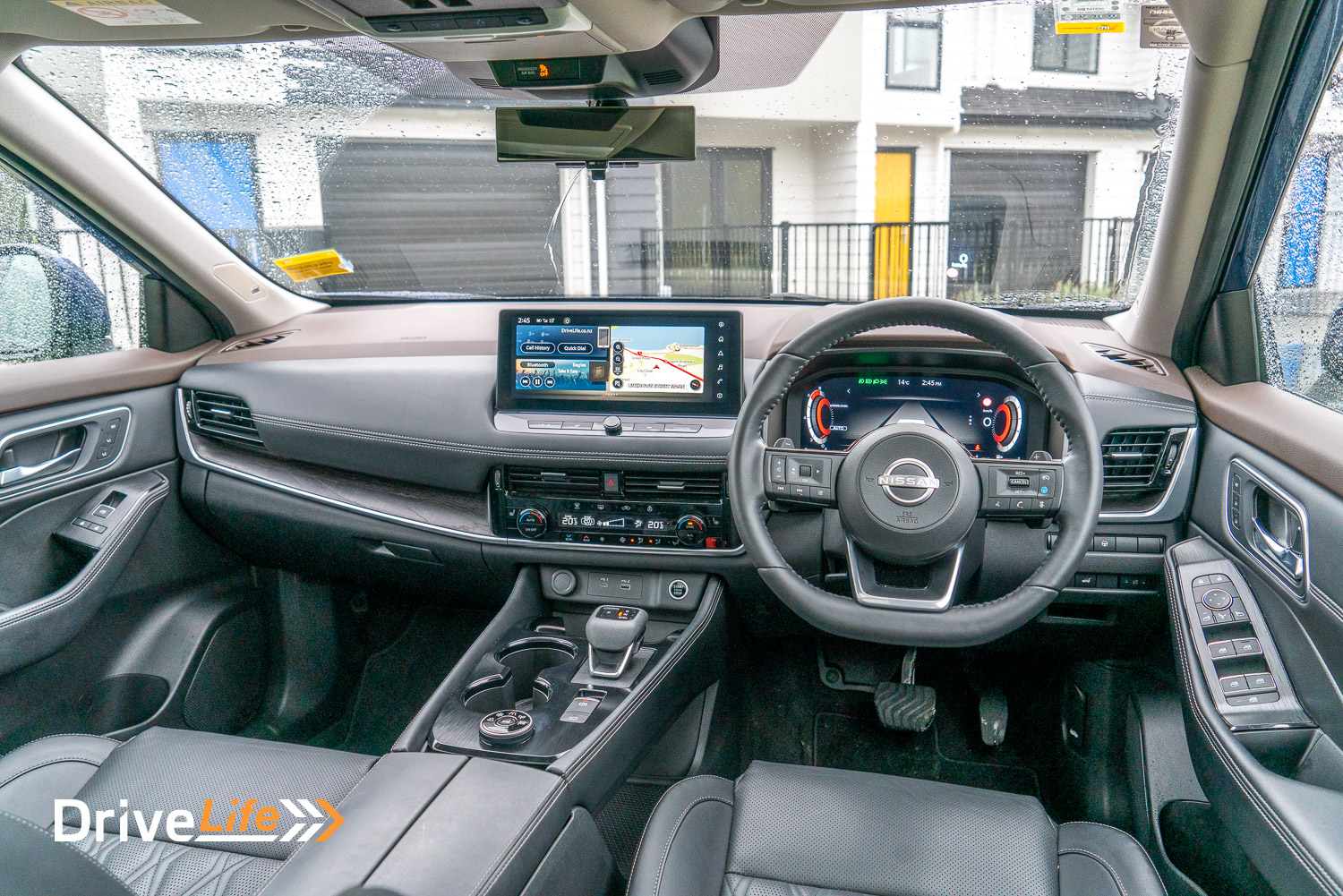
Inside, there’s plenty of cowhide dressing various surfaces. The upper dash is wrapped in brown leather, while black leather adorns the doors, the seats and the steering wheel. The switchgear has a convincing clicky tactility to it. You can still find a few scratchy plastics, but only in areas where you’d want something durable (like behind the door-handles).

The cabin ergonomics are spot-on too, with logical control layouts and a high driving position that offers plenty of configurability in the top spec Ti-L trim. Importantly, Nissan has managed to strike an good balance between having the latest technology while incorporating legacy physical controls.
The result is a cabin that just simply works, and I cannot stress how refreshing this is. Some car companies seemingly get too embroiled in technological one-upmanship, sometimes at the expense of day-to-day usability. Those sorts of cabins might impress on a test drive, but will only frustrate you during ownership. Nissan hasn’t fallen into this trap.
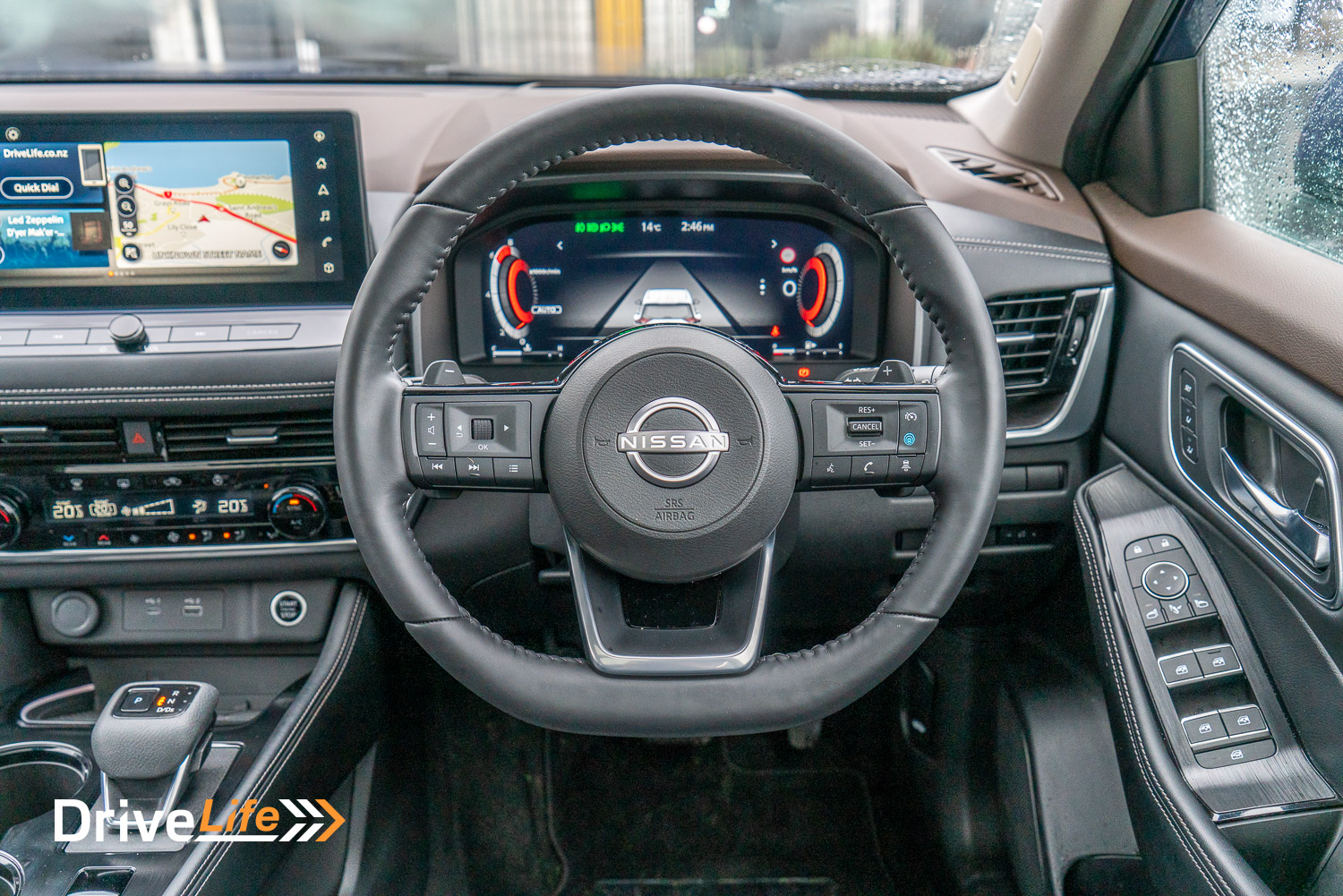
Situated in the centre is a 10.3’’ infotainment unit, which introduces Nissan’s latest user interface. The latest software is a much-needed upgrade over the old unit, and is now one of the best to use amongst its direct competitors.
The screen resolution is excellent, as are the colour and black levels. The UI has little noticeable lag, but it’s still not going to match the most responsive systems available.

The resolution of the exterior cameras is also good. Nissan has also included its Intelligent Rear View Mirror in this top-spec model, meaning the rear vision mirror can be switched over to a camera. It’s quite useful at night time (the camera brightens the environment), or if you have passengers blocking your rear vision.
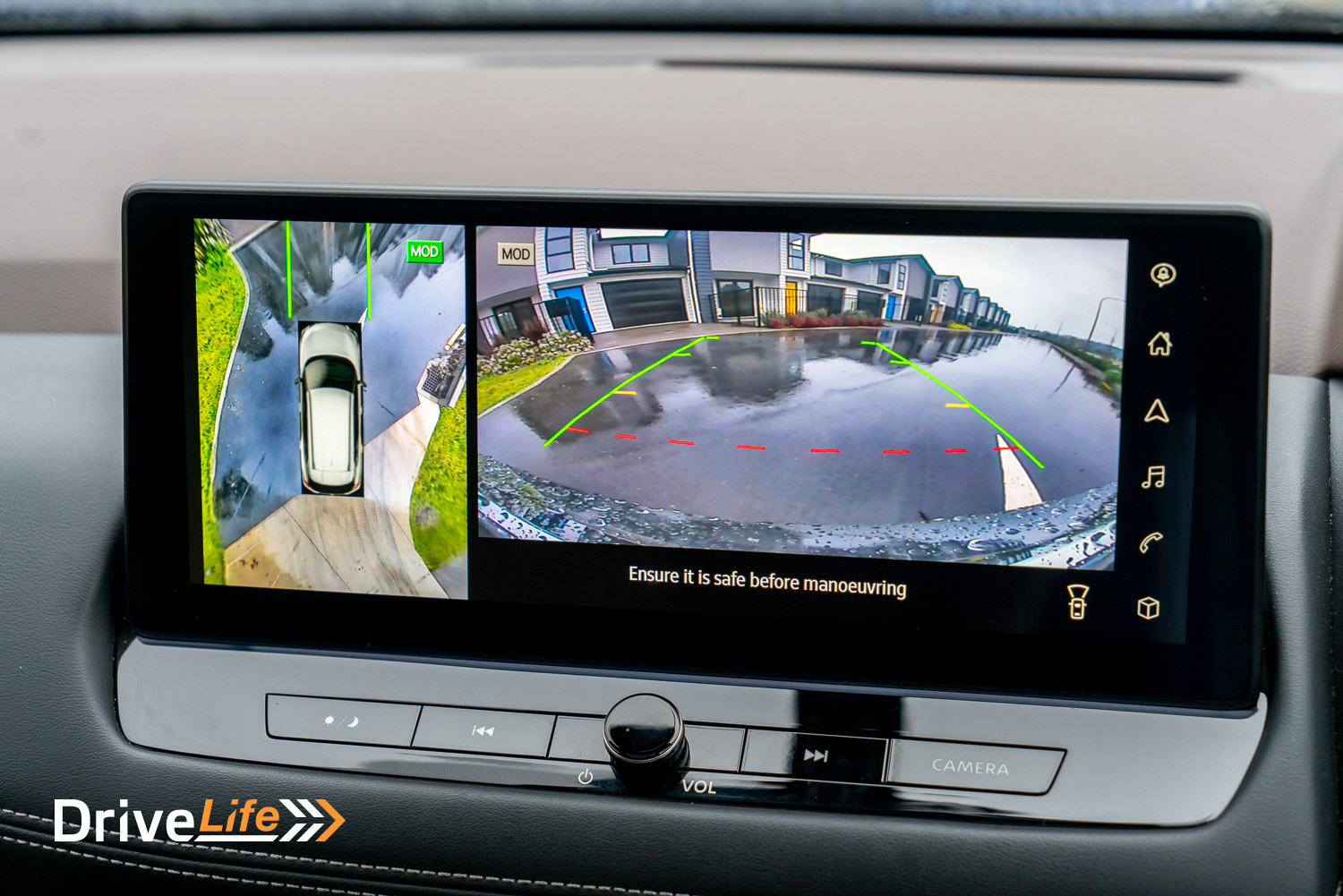
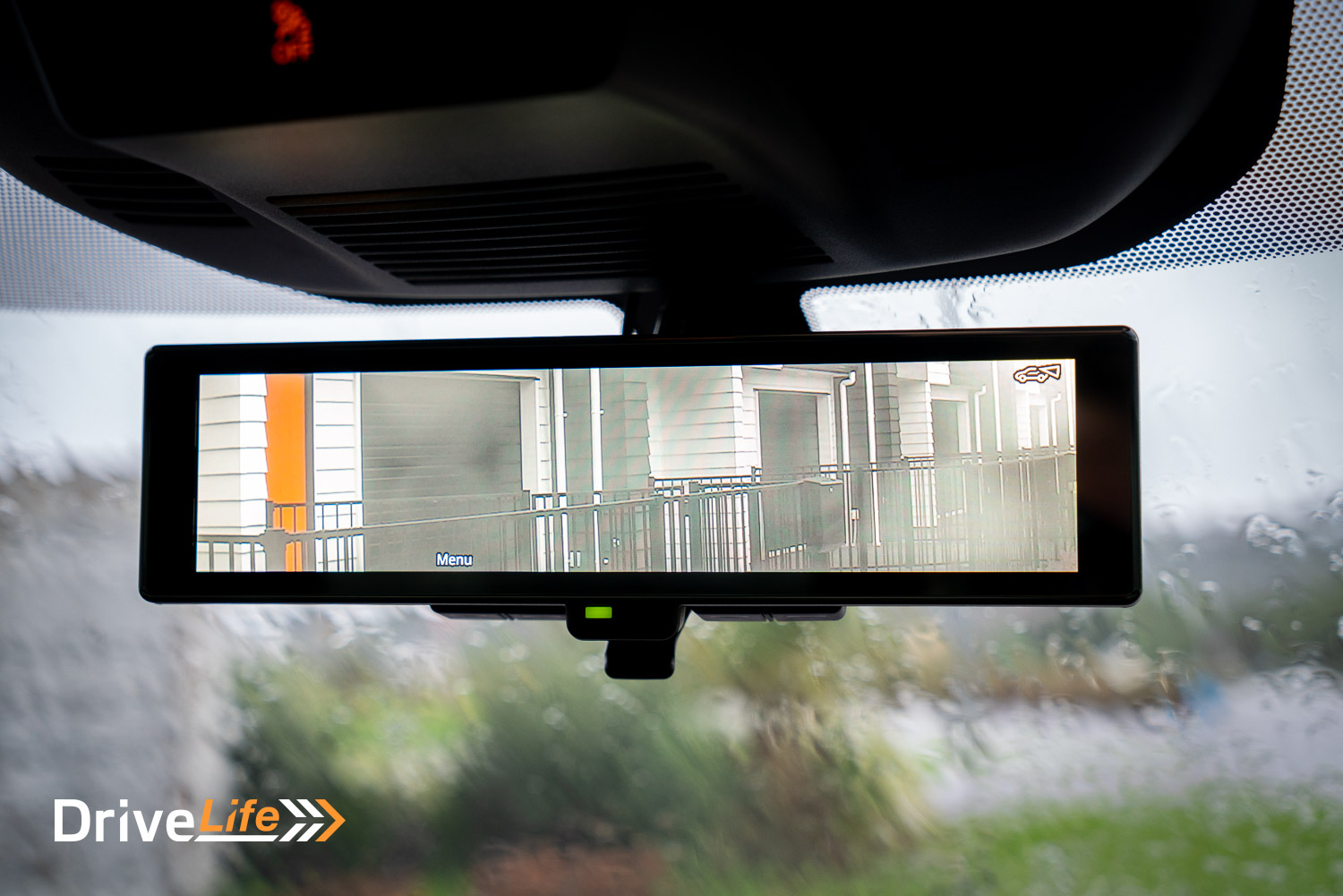
The driver’s instrument cluster is a 12.3’’ display. The resolution is excellent, and there’s several pre-set graphics, offering the driver a moderate level of configurability. I found many of these options to be rather busy, which could be frustrating for some users. In reality, you’ll pick-one and seldom change it. My default was the simple dial display.
The front seats are supportive and offer 8-way configurability in the top-spec TI-L. Rear seat passengers have ample amounts of head and leg-room, along with heated outboard seats, rear occupant zone climate control and built-in sunshades inside the door cards.
Boot space is 585-litres. The rear seats can fold flat, but cannot be stowed up against the front seats. Speaking of, there’s no remote levers for lowering the seats, a feature which some other manufacturers do offer. There’s also a false floor, providing a flat loading lip into the boot, or you can ditch it in favour of a fraction more cargo capacity.
What’s The 2023 Nissan X-Trail Ti-L Like To Drive?
Up until now, I have been avoiding an important topic regarding the new X-Trail. Mainly, because this generation X-Trail is harbouring a secret, one which it has not previously had to hide.
In 2017, Renault-Nissan formed an alliance with Mitsubishi, in which each manufacturer would combine their collective expertise, and importantly, to share vehicle development costs. This means, the fourth generation X-Trail is closely related to the Mitsubishi Outlander.
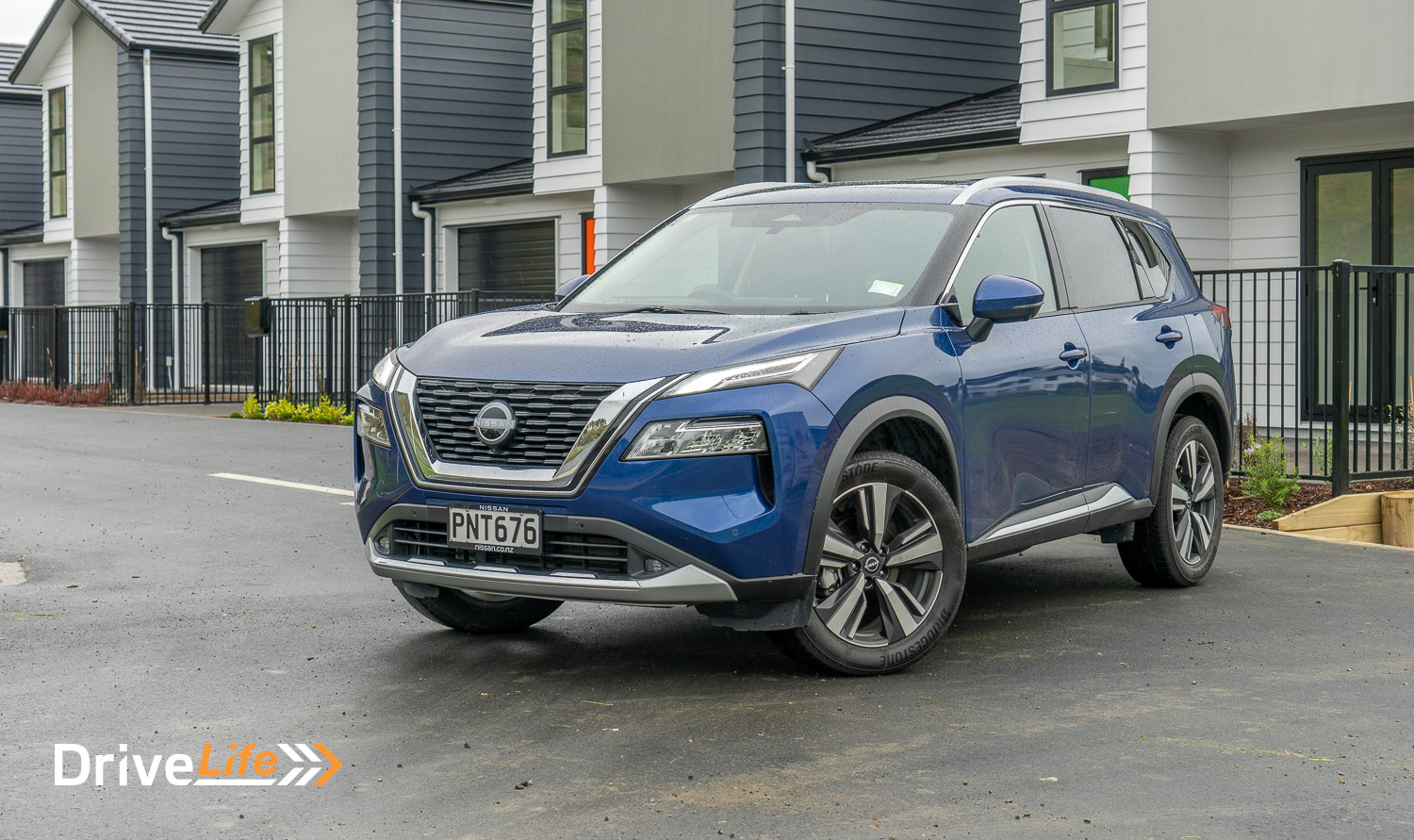
How close exactly? Well, they’re built on the same platform and essentially share the same chassis. The Petrol-powered X-Trail and Outlander also share an alliance-designed powertrain, meaning the engine and gearbox are the same too. Of course, this is only true for the petrol-driven variants. The hybrid variants of X-trial and Outlander do not share the same powertrain. Instead, the hybrid X-Trail uses a Nissan developed battery-hybrid powertrain, whereas the Outlander PHEV uses a Mitsubishi-developed plug-in hybrid powertrain.
Anyway, this joint-development should be good news for the X-Trail. The Outlander is an excellent SUV in its own right. It even won our COTY in 2021.
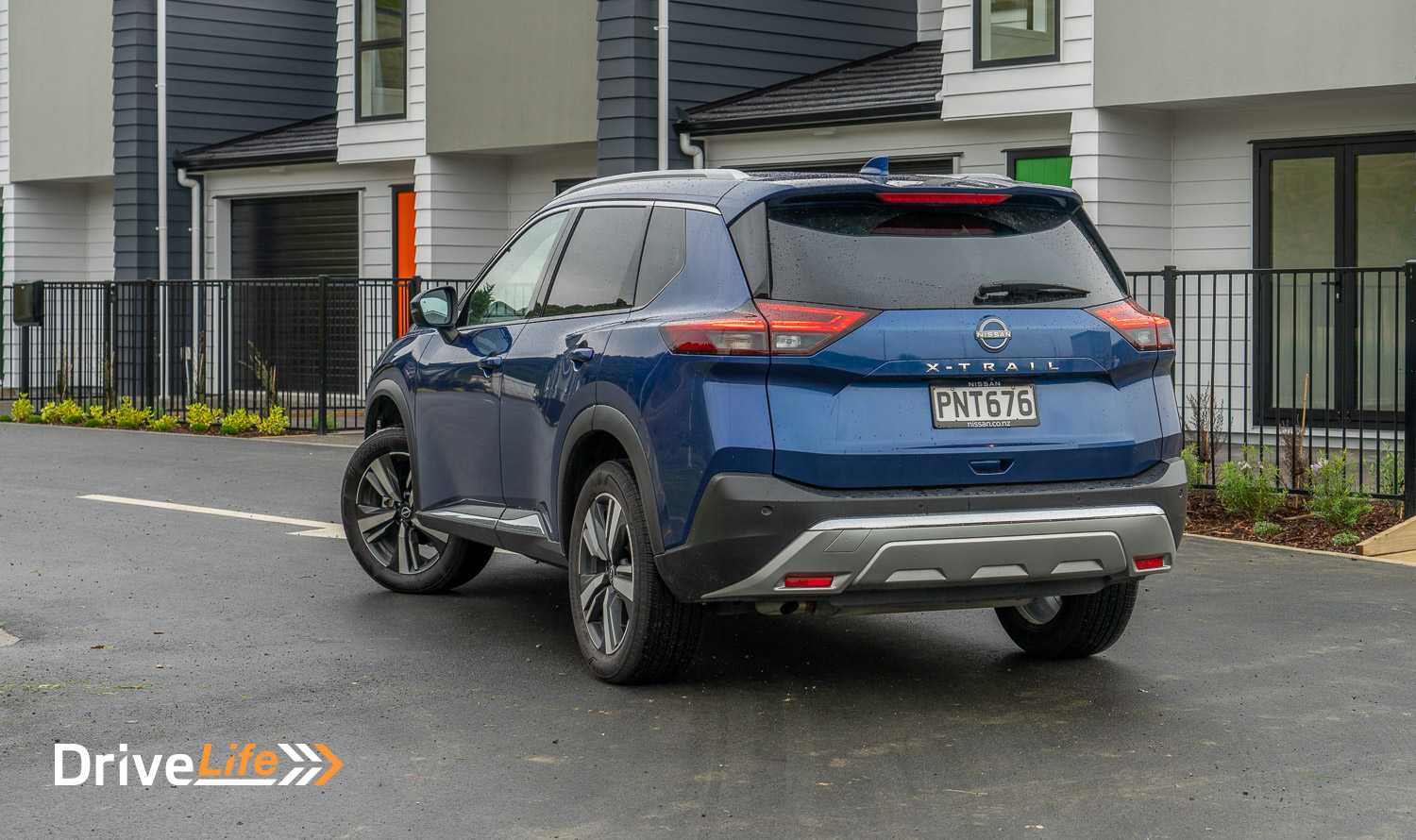
The alliance-designed engine is a 2.5-litre naturally aspirated four-cylinder, producing 134kW of power and 245Nm of torque. The engine is paired with a X-CVT transmission, delivering power to either the front or all-four wheels, depending on configuration. We’ve got AWD on our press vehicle.
Its performance isn’t going to light your hair on fire, but the engine is quiet, refined and there’s enough oomph to not make you nervous in a passing lane. The CVT, on the other hand, is the weaker link. Under heavy acceleration, you may notice the gaps (or the flaring) between shifts. That said, it’s not particularly noticeable provided you’re not regularly performing overtaking manoeuvres.
During our daily duties, the X-Trail achieved a fuel economy figure of 8.2L/100kms, which was surprisingly efficient for its size and only just north of Nissan’s claimed figure of 7.8L/100kms. However, much of our testing of the X-Trail was on motorways. You can expect this figure to climb if you spend more time traveling through suburbs. For example, our test of the petrol-powered Outlander gave a result of 10.1L/100kms.

Given the blood relationship shared between the X-Trail and the Outlander, presumably ride and handling characteristics are similar? In short, the answer is a broad yes. However, there is some minutiae to this matter. In comparison to the Outlander, the X-Trail has a softer-ride quality. While both are nicely sprung, the X-Trail is just a fraction more plush.
The Outlander, by comparison, does better with its handling and body control. The Outlander disguises its mass better through quicker corners, whereas the X-Trail does feel like it’s working harder to maintain its composure. That said, both the Outlander and X-Trail are mid-size crossovers, and both handle accordingly. Neither SUV has good steering feedback, and both will lose poise fairly quickly when you start testing the limits, which shouldn’t really surprise anyone.
In short, the X-Trail rides better and the Outlander handles better. But, there’s not much in it, if we’re being frank. Both are exceptionally well-rounded SUVs. Although, I think I’d pick the X-Trail if I was planning a longer trip.
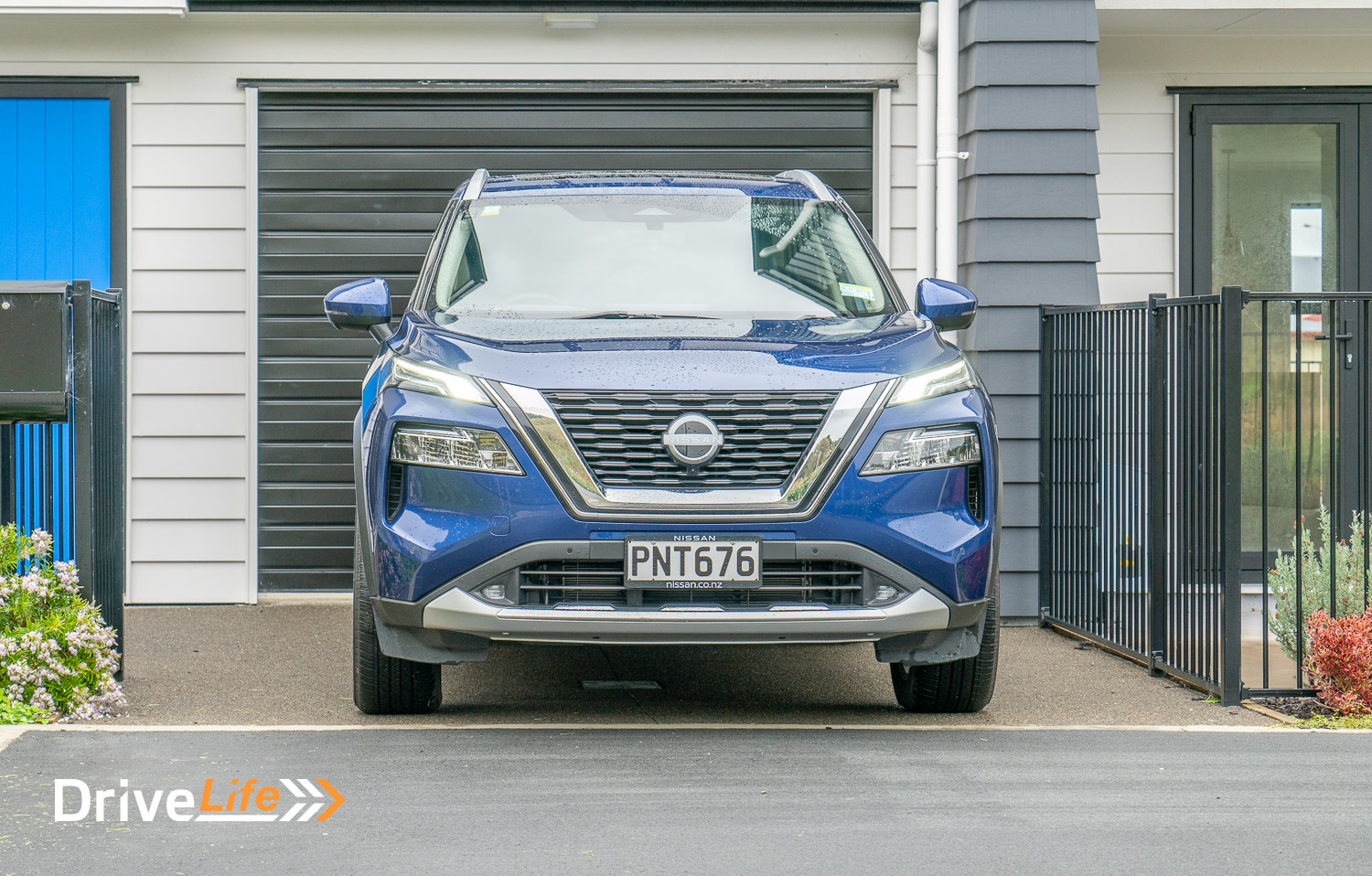
It would be a crime of Nissan to not provide the X-Trail with some form of off-roading ability. After-all, it is in the name.
Earlier-gen X-Trails did have some off-roading credibility. Sure, you don’t have the hardware or the clearances to do anything serious, but they were considered capable for their class. Nissan does appear intent on keeping this reputation intact with the fourth-gen X-Trail. It has configurable off-roading modes, including hill descent control. We did not conduct any off-roading tests of the X-Trail - I wasn’t so inclined on its road tyres. So, we’ll just need to take Nissan’s word for it.
The X-Trail is equipped with Intelligent Mobility safety software. Intelligent Mobility is the catch-all term for its driver assistance software, such as adaptive cruise control, lane-centring assistance, and so on. You can find a list under the Range section of our review. All the core functions are well-calibrated. The lane-centring assistance aid was particularly good, bettering the systems offered in rivals, such as the Toyota RAV-4 and the Mazda CX-5. The traffic sign recognition software did have a couple of false readings, but no more than expected. These systems are never perfectly reliable in any car.
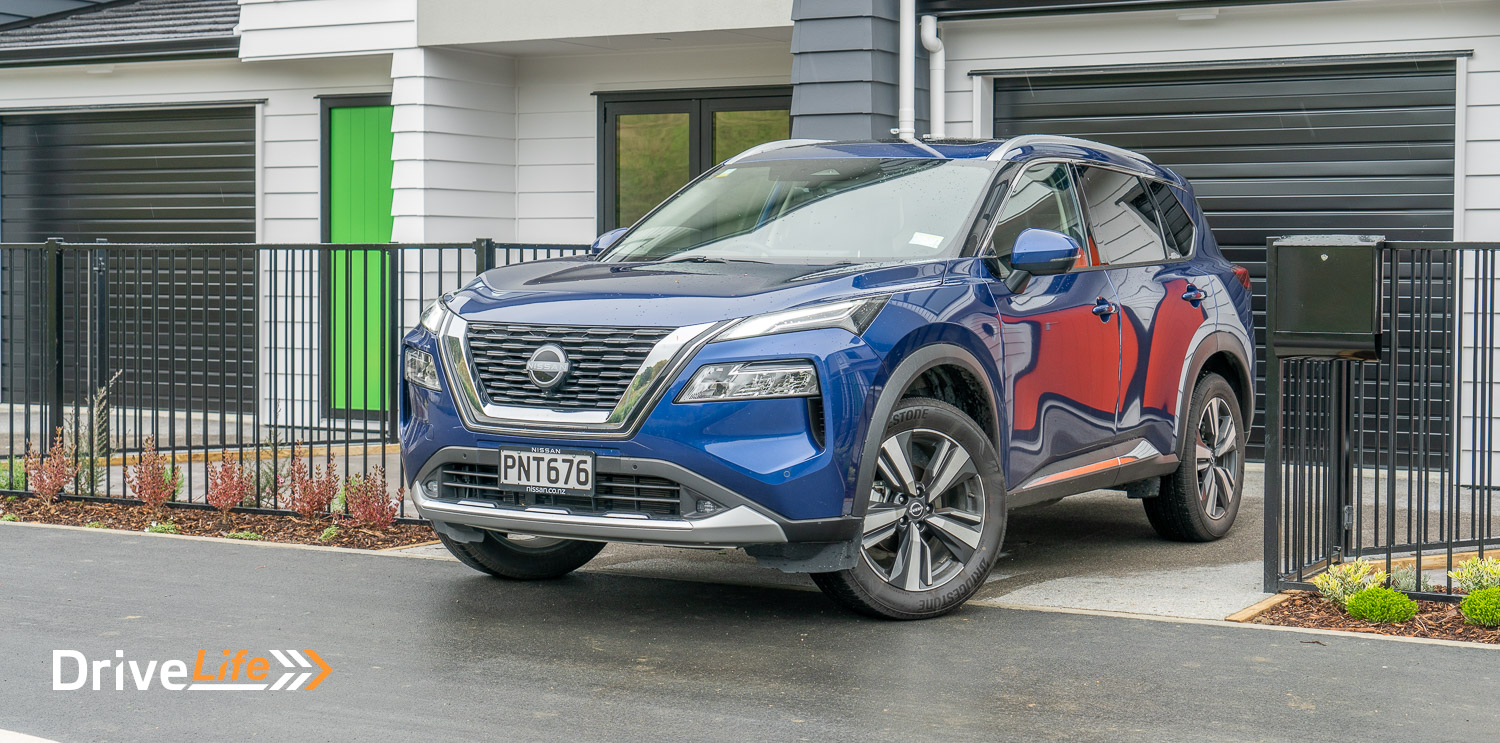
2023 Nissan X-Trail Ti-L Specifications
| Vehicle Type | Mid-size SUV |
| Starting Price | $59,990 |
| Price as Tested | $59,990 |
| Engine | 2.5-litre 4-cylinder petrol |
| Power, Torque (kW/Nm) | 135/244 |
| Transmission | CVT |
| Spare Wheel | Space saver |
| Kerb Weight, (Kg) | 1,672 |
| Length x Width x Height (mm) | 4680 x 2065 x 1725 |
| Boot space / Cargo capacity Litres (seats up/seats down) | 585 (second row in-place) |
| Fuel tank capacity (Litres) | 55 |
| Fuel Economy (L/100km) | Advertised Spec – Combined – 8.7 Real-World Test – Combined – 8.2 Low Usage: 0-6 / Medium Usage 6-12 / High Usage 12+ |
| Towing Capacity (Kg, unbraked/braked) | 750/2,000 |
| Turning circle (Metres) | 11.1 Small: 6-10m / Medium 10-12m / Large 12m+ |
| Warranty | 5 year/150,000 km factory warranty 5 year/150,000 km roadside assist |
| Safety information | ANCAP Rating – 5 Star Rightcar.govt.nz – 5 Stars – PNT676 |
Have you enjoyed this review? Be sure to join our monthly email newsletter list so you don’t miss a single car review!


